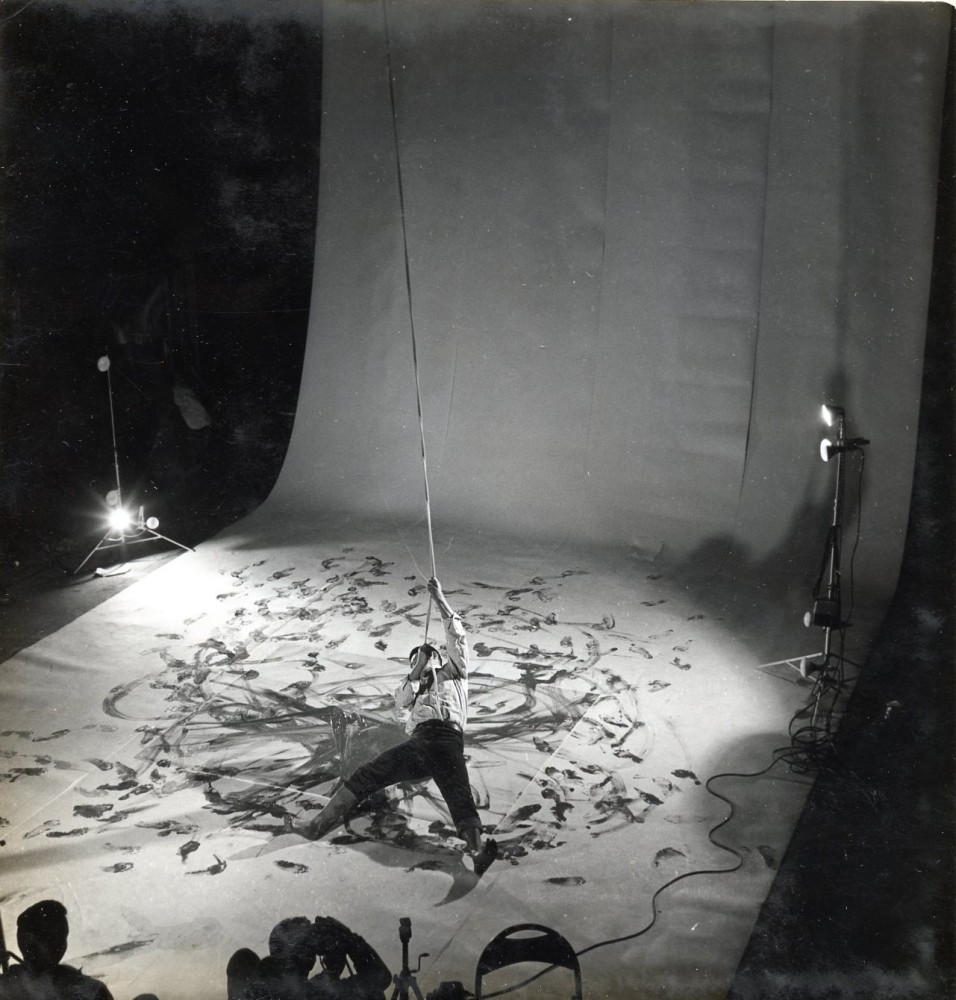
Shiraga painting with his feet for Life magainze, at the Nishinomiya factory of Yoshihara's salad oil company, 1956.
Mnuchin Gallery is proud to announce an exhibition of major paintings by Kazuo Shiraga (1924 – 2008). Tracing the evolution of Shiraga’s signature “foot painting” method over his entire career, it will feature 20 examples spanning nearly five decades, beginning in 1959. It will be accompanied by a fully-illustrated catalogue authored by noted Gutai scholar Dr. Ming Tiampo, Associate Professor of Art History at Carleton University, with an introduction by Dr. Reiko Tomii, independent art historian and curator. The exhibition will be on view February 10 - April 11, 2015.
Shiraga first embarked upon his experiments with foot painting in 1954, on a quest to articulate a radical individualism as a rejection of Japan’s wartime militarism. Throwing away his brushes and rejecting his hands as too trained, Shiraga began painting with his feet, which enabled a fresh and direct mode of expression. Starting with paper or canvas laid out on the floor, the artist would deposit copious amounts of oil paint on the surface, and paint with the movements of his bare feet, sometimes hanging from the ceiling by a rope. Shiraga went on to employ this method of painting for the rest of his career, declaring, “I have never doubted that ‘action painting’ is my expression, never stopped it. I will single-mindedly continue to paint my painting with a sincere desire that the pleasure of making a painting will be communicated to those who see it.”1 While the palette and mood of these works evolved over time, they are united by a vigorous energy and a facture so dramatically rich and textured as to be almost sculptural.
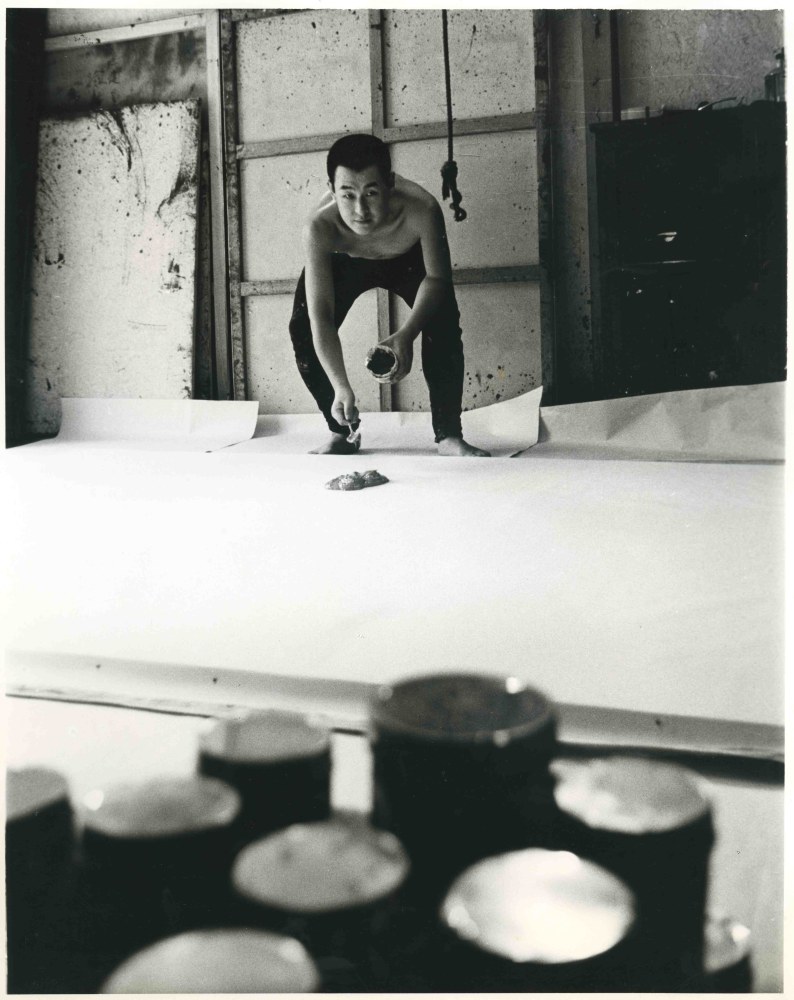
Shiraga placing paint with palette knife, ca. 1965
A leading member of the Gutai Art Association, the most influential collective of avant-garde artists in postwar Japan, Shiraga is known not only for his innovations in action painting but also for his groundbreaking performances, such as Challenging Mud (1955), which predated Allan Kaprow’s Happenings in the United States and Europe. Shiraga’s work featured prominently in the Museum of Modern Art’s 2012-2013 exhibition, Tokyo 1955 – 1970: A New Avant-Garde and in the Guggenheim’s 2013 exhibition, Gutai: Splendid Playground, co-curated by Dr. Tiampo.
Shiraga will be the subject of Between Action and the Unknown: The Art of Kazuo Shiraga and Sadamasa Motonaga, a two-person exhibition opening at the Dallas Museum of Art in February 2015.
1. Kazuo Shiraga, “Akushon peintingu eno michi” [A path to action painting], trans. Reiko Tomii in Kazuo Shiraga: Six Decades, exh. cat. (New York: McCaffrey Fine Art, 2009), 68. Originally published in Shiraga Kazuo-ten, exh. cat. (Amagasaki: Amagasaki Cultural Center, 1989).
この足で描きはじめてよりの三十五年の間に、現代美術の世界ではいろんな新しいものが生まれ、流行の嵐が吹き荒れた。しかし私はアクションペインティングこそ自分 の芸術表現と信じて疑わず、これをやり続けてきた。絵を描くことの喜びが、観る人達に伝わることを一心に願って、自分の絵をひたすら描き続けるだけである。
THIRTY-FIVE YEARS SINCE I INVENTED MY FOOT PAINTING, THE ART WORLD HAS SEEN MANY NEW THINGS, MANY STYLISTIC STORMS. HOWEVER, I HAVE NEVER DOUBTED THAT “ACTION PAINTING” IS MY EXPRESSION, NEVER STOPPED IT. I WILL SINGLE-MINDEDLY CONTINUE TO PAINT MY PAINTING WITH A SINCERE DESIRE THAT THE PLEASURE OF MAKING A PAINTING WILL BE COMMUNICATED TO THOSE WHO SEE IT.
- KAZUO SHIRAGA

Photography by Tom Powel Imaging, Inc.
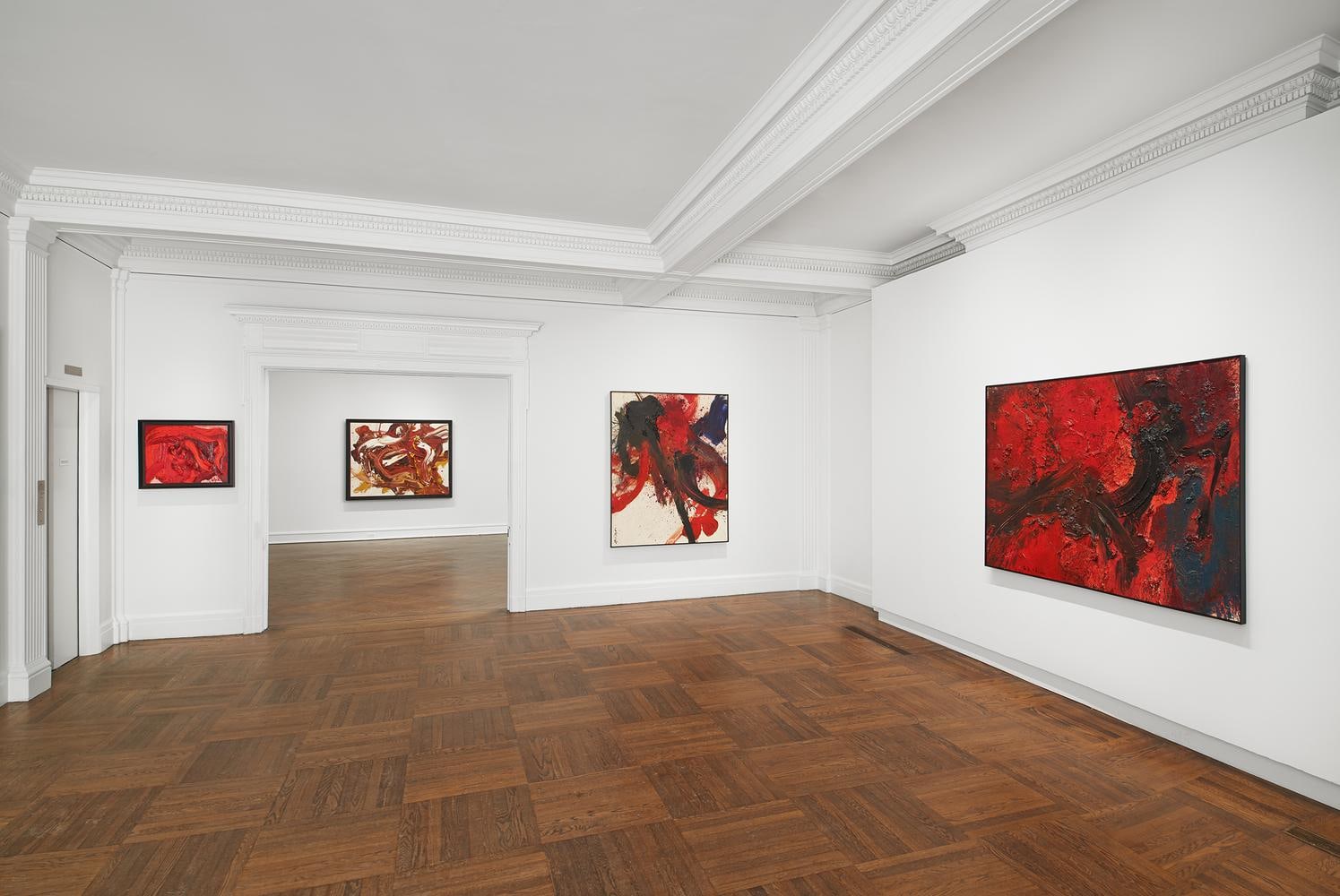
Photography by Tom Powel Imaging, Inc.
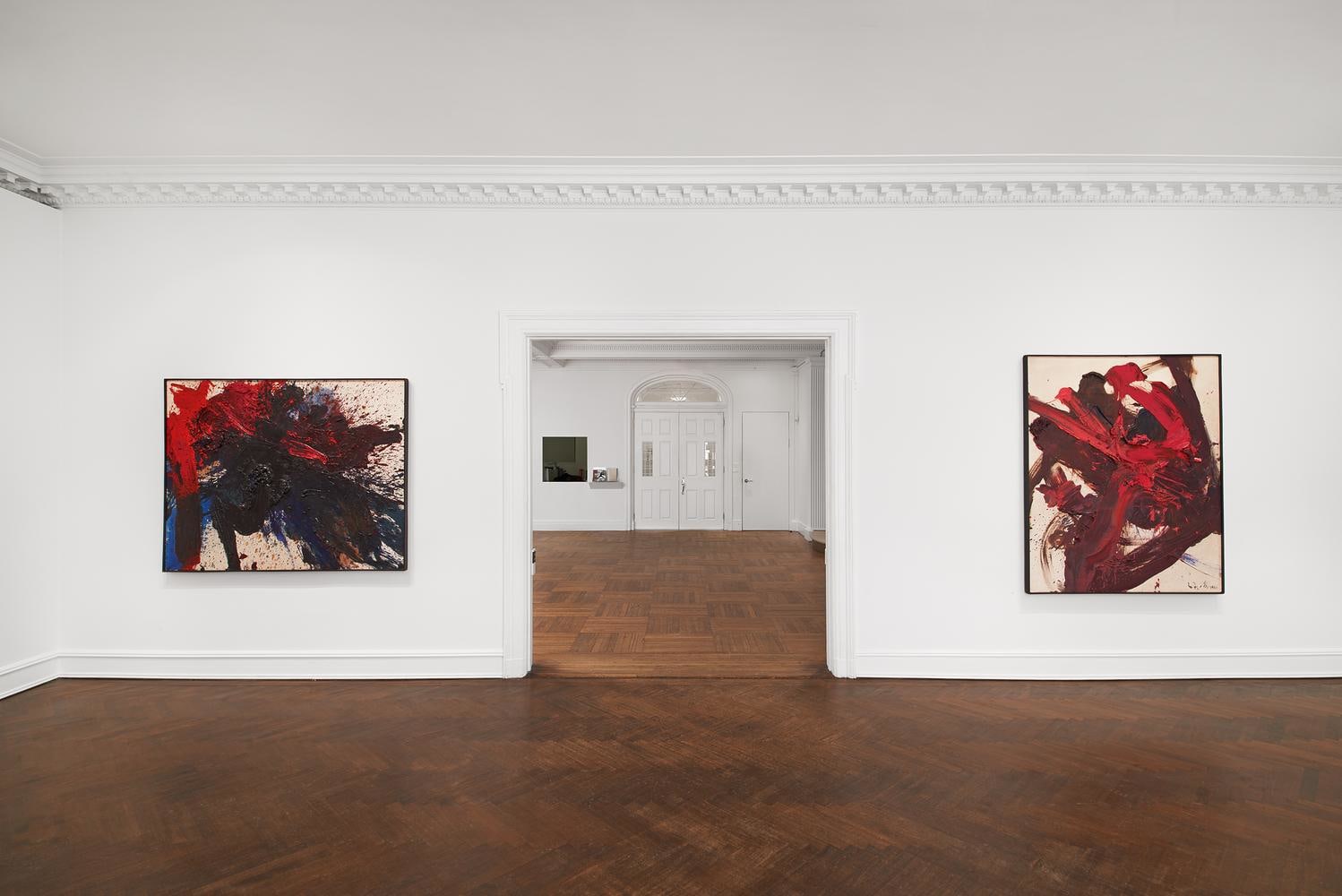
Photography by Tom Powel Imaging, Inc.

Photography by Tom Powel Imaging, Inc.
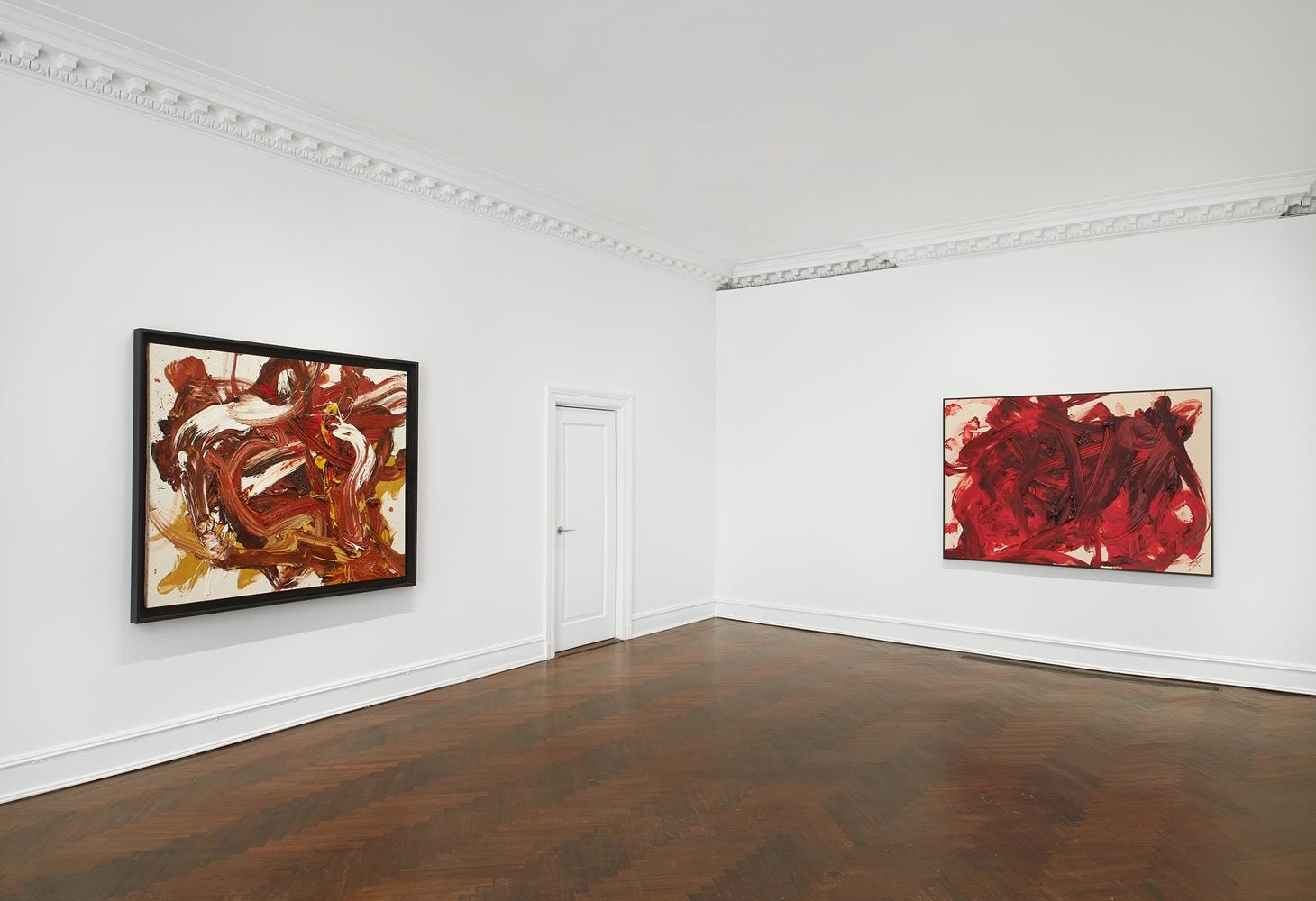
Photography by Tom Powel Imaging, Inc.
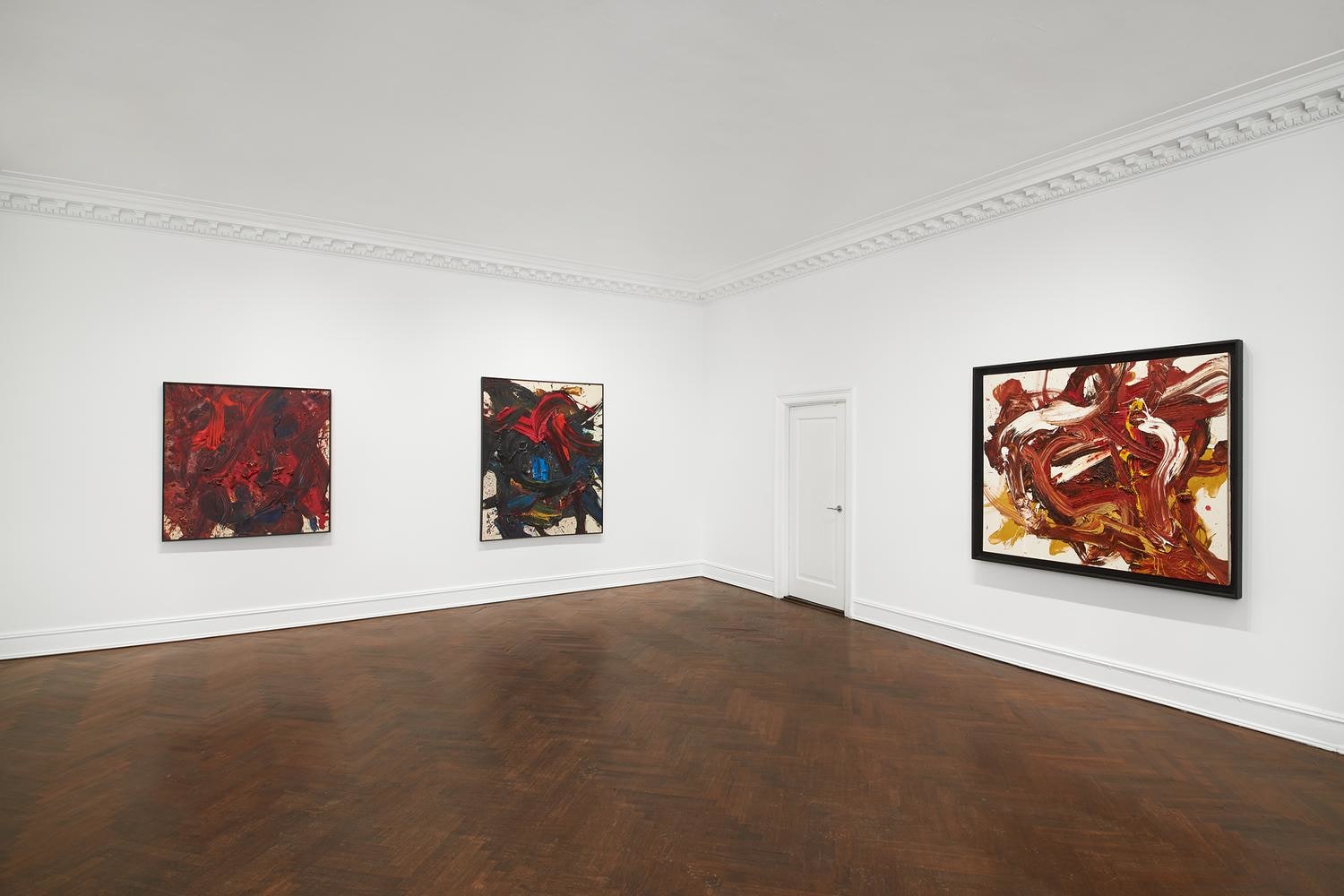
Photography by Tom Powel Imaging, Inc.
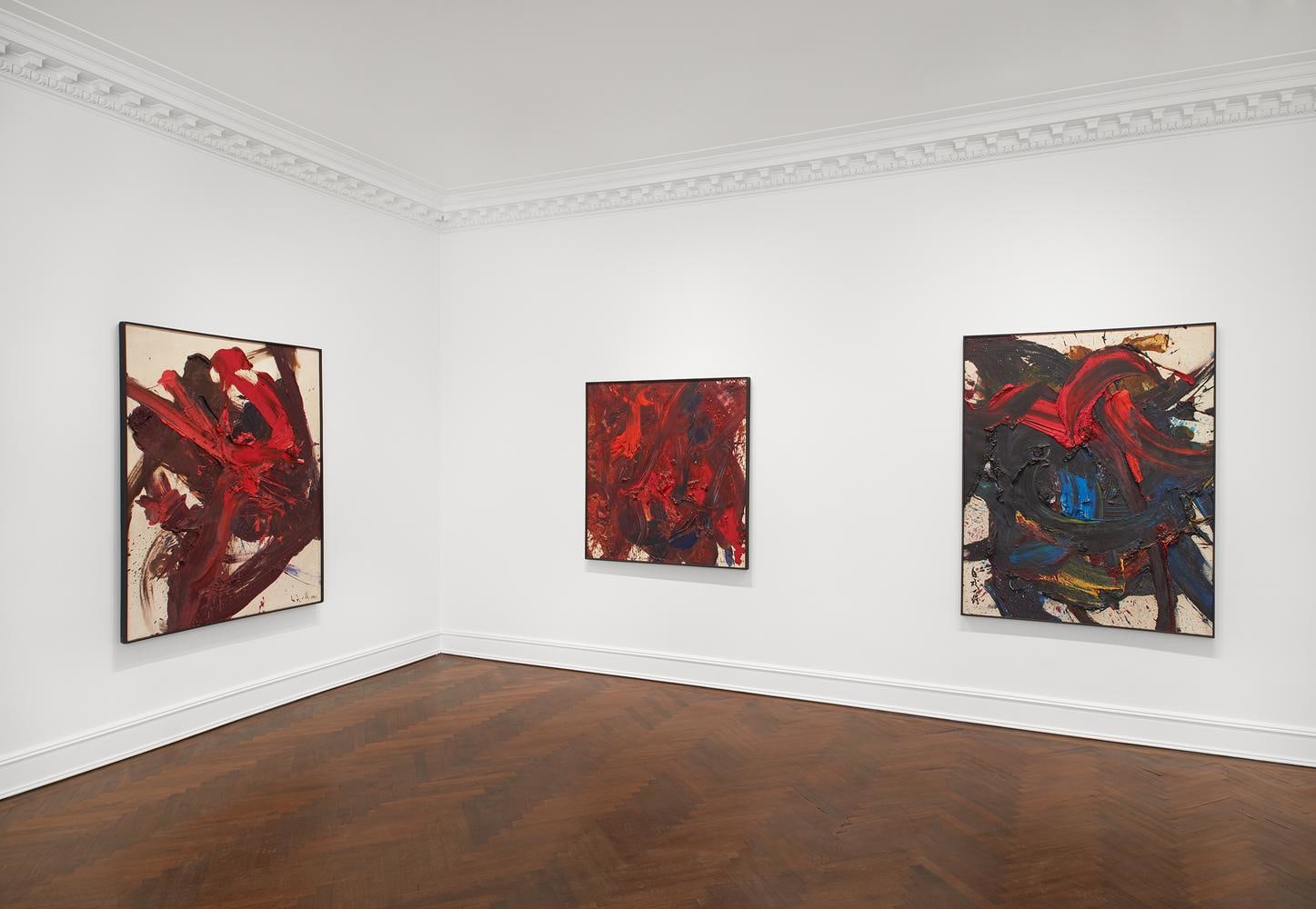
Photography by Tom Powel Imaging, Inc.
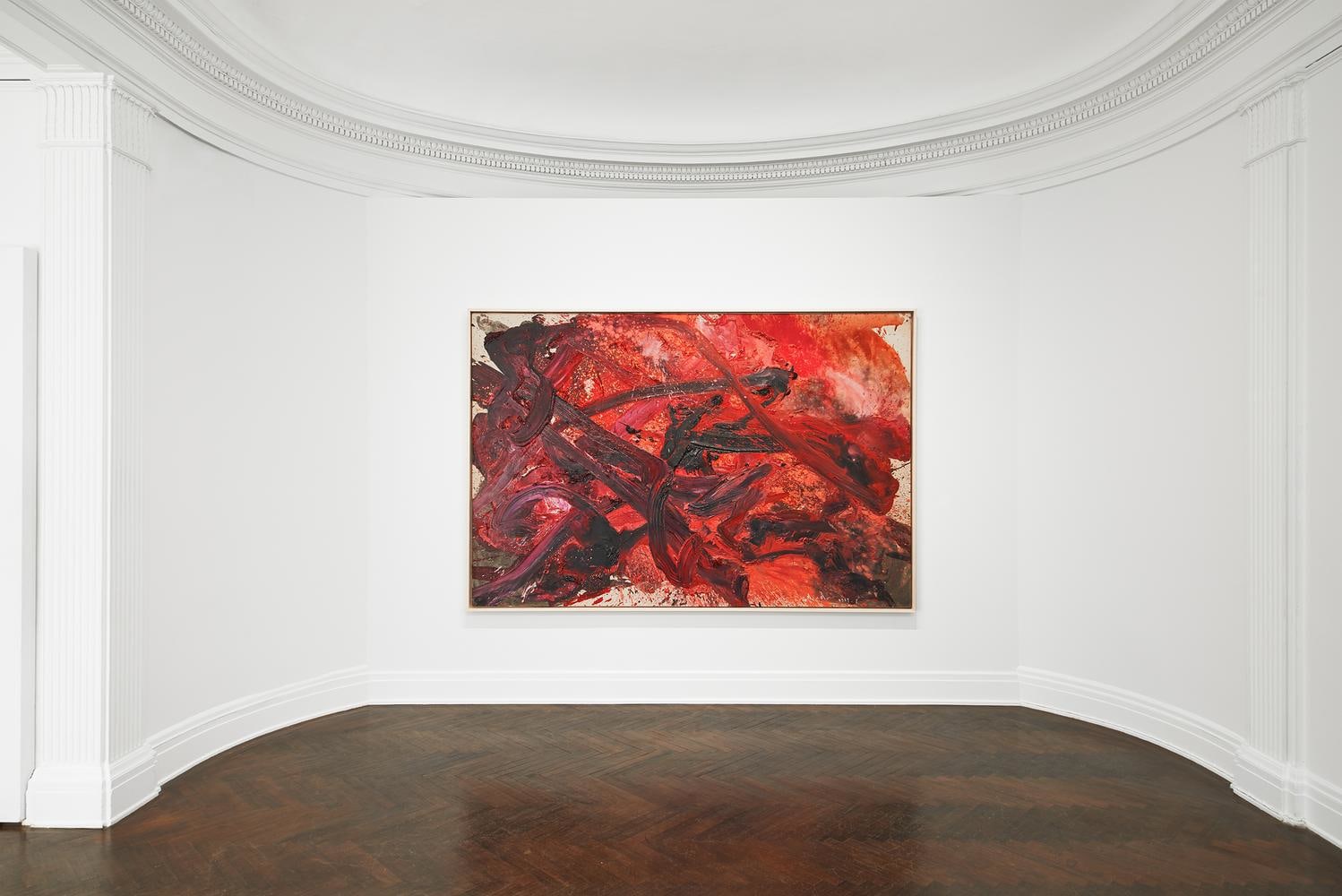
Photography by Tom Powel Imaging, Inc.
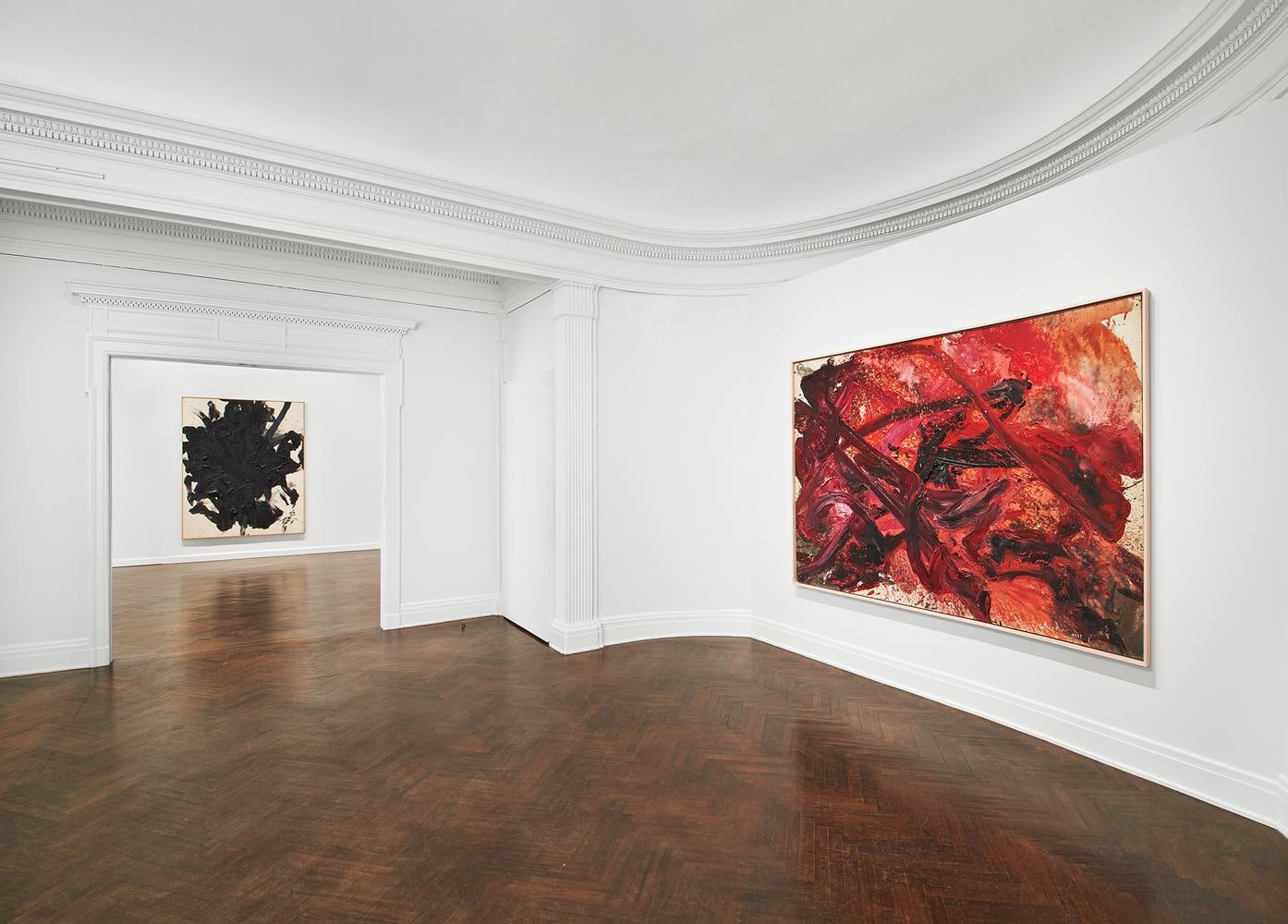
Photography by Tom Powel Imaging, Inc.
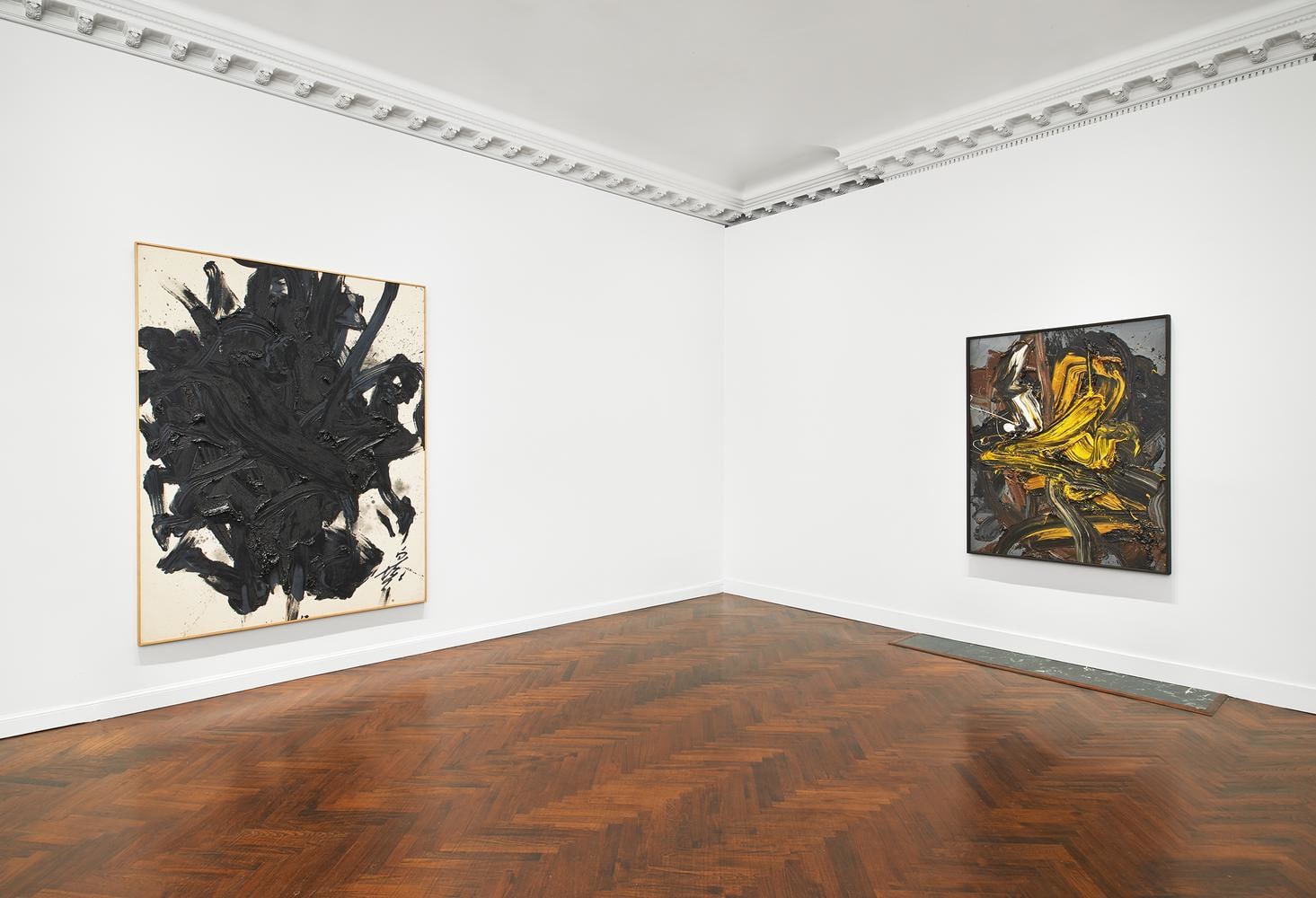
Photography by Tom Powel Imaging, Inc.

Photography by Tom Powel Imaging, Inc.
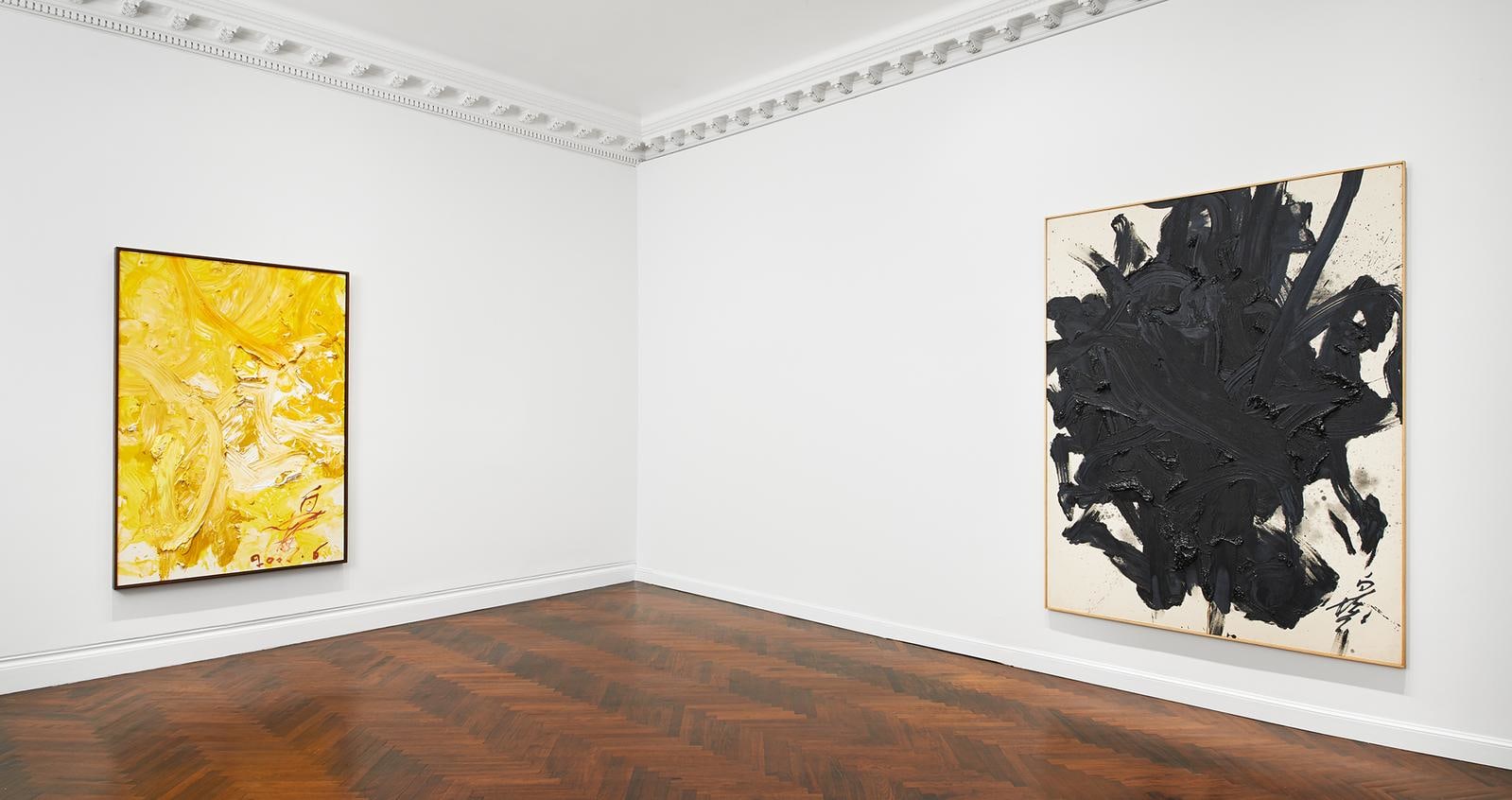
Photography by Tom Powel Imaging, Inc.
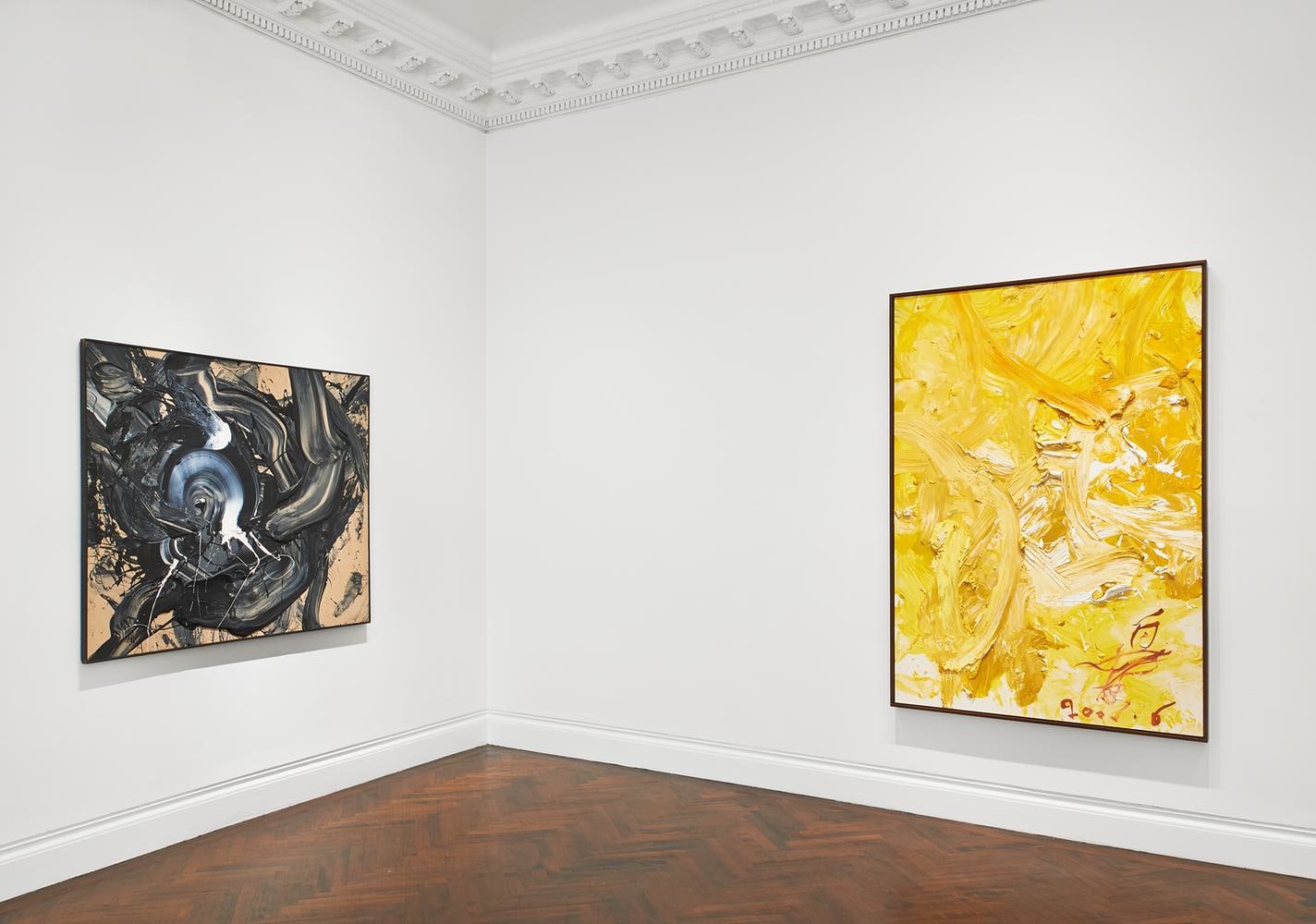
Photography by Tom Powel Imaging, Inc.
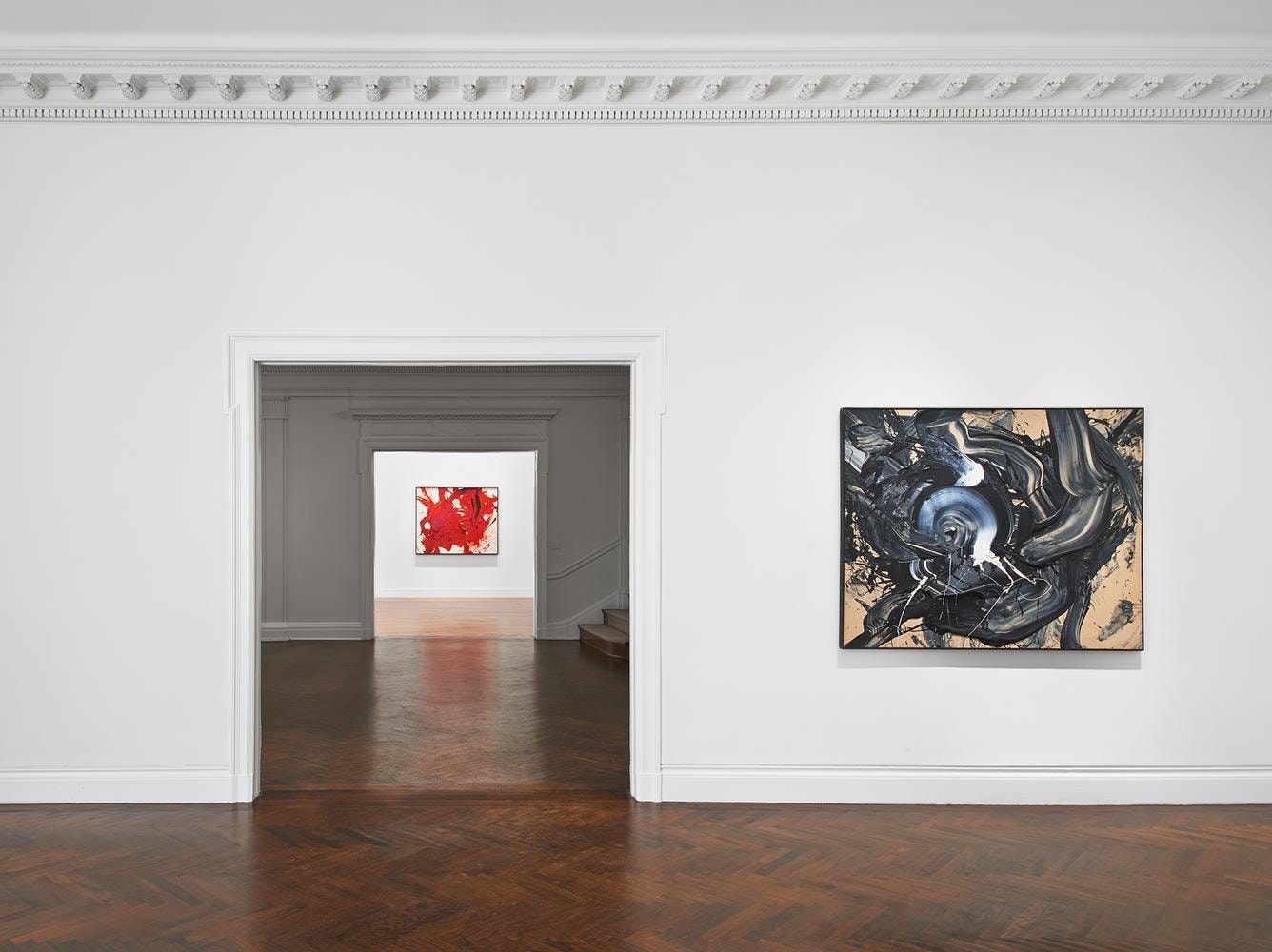
Photography by Tom Powel Imaging, Inc.
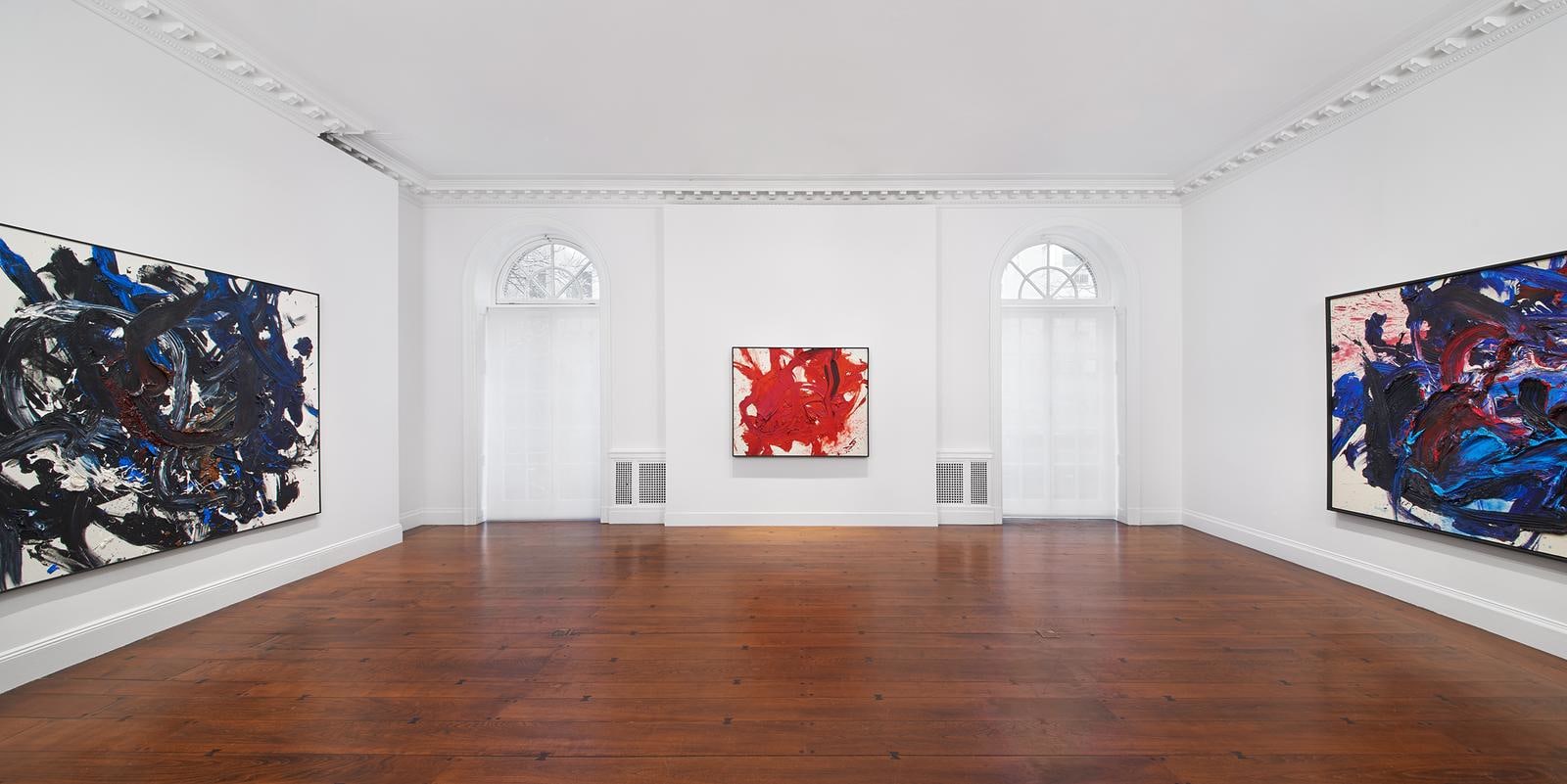
Photography by Tom Powel Imaging, Inc.
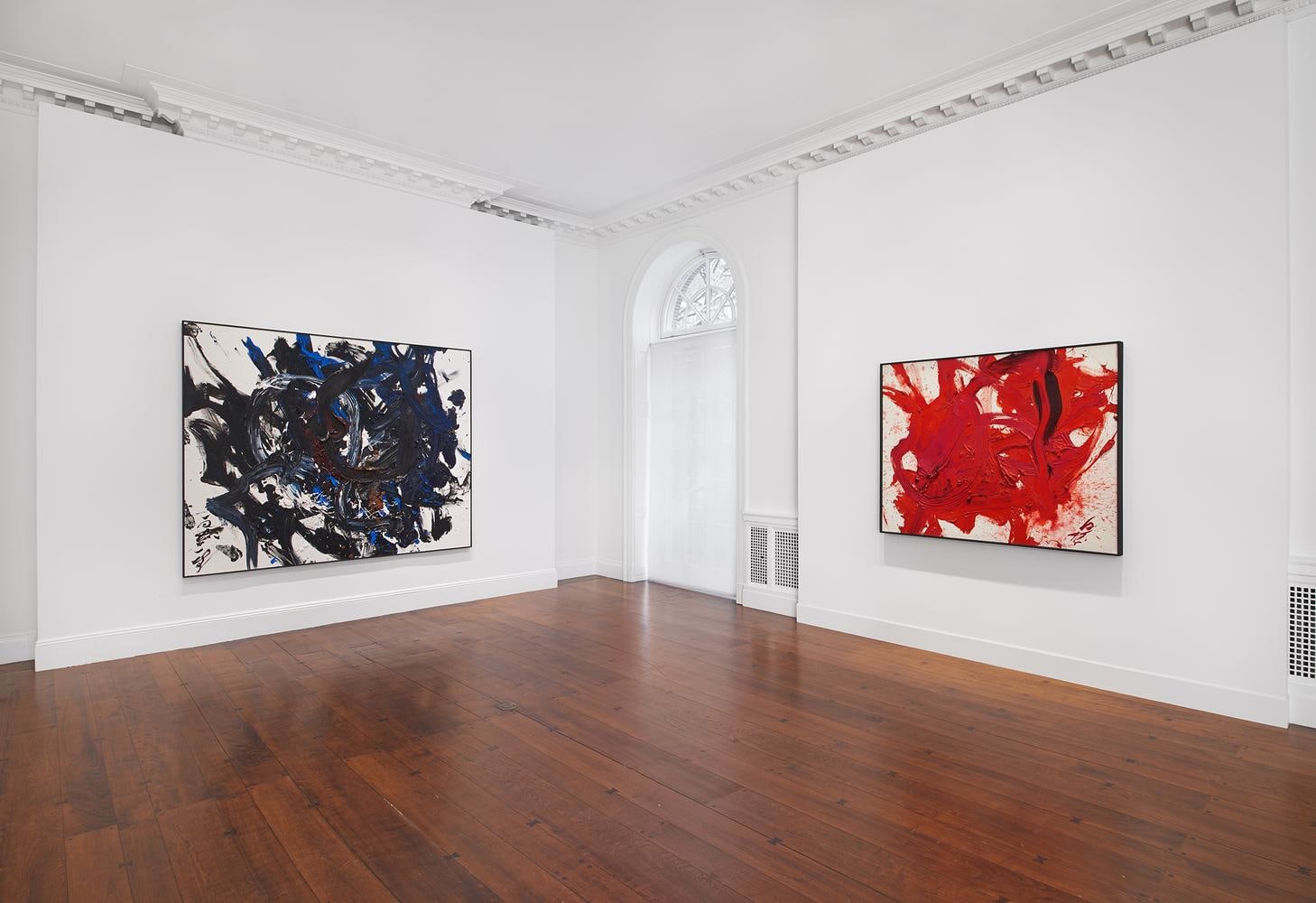
Photography by Tom Powel Imaging, Inc.
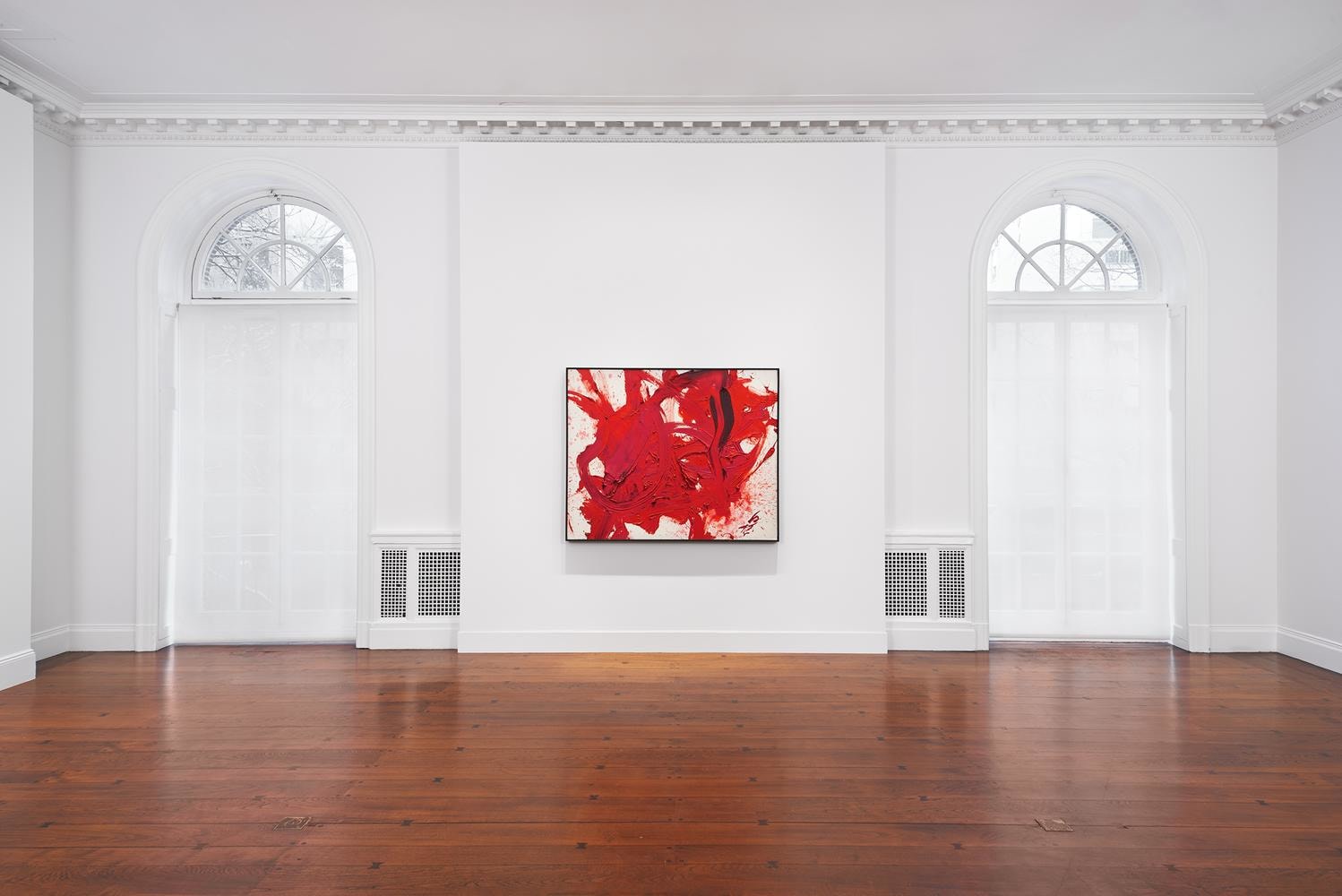
Photography by Tom Powel Imaging, Inc.
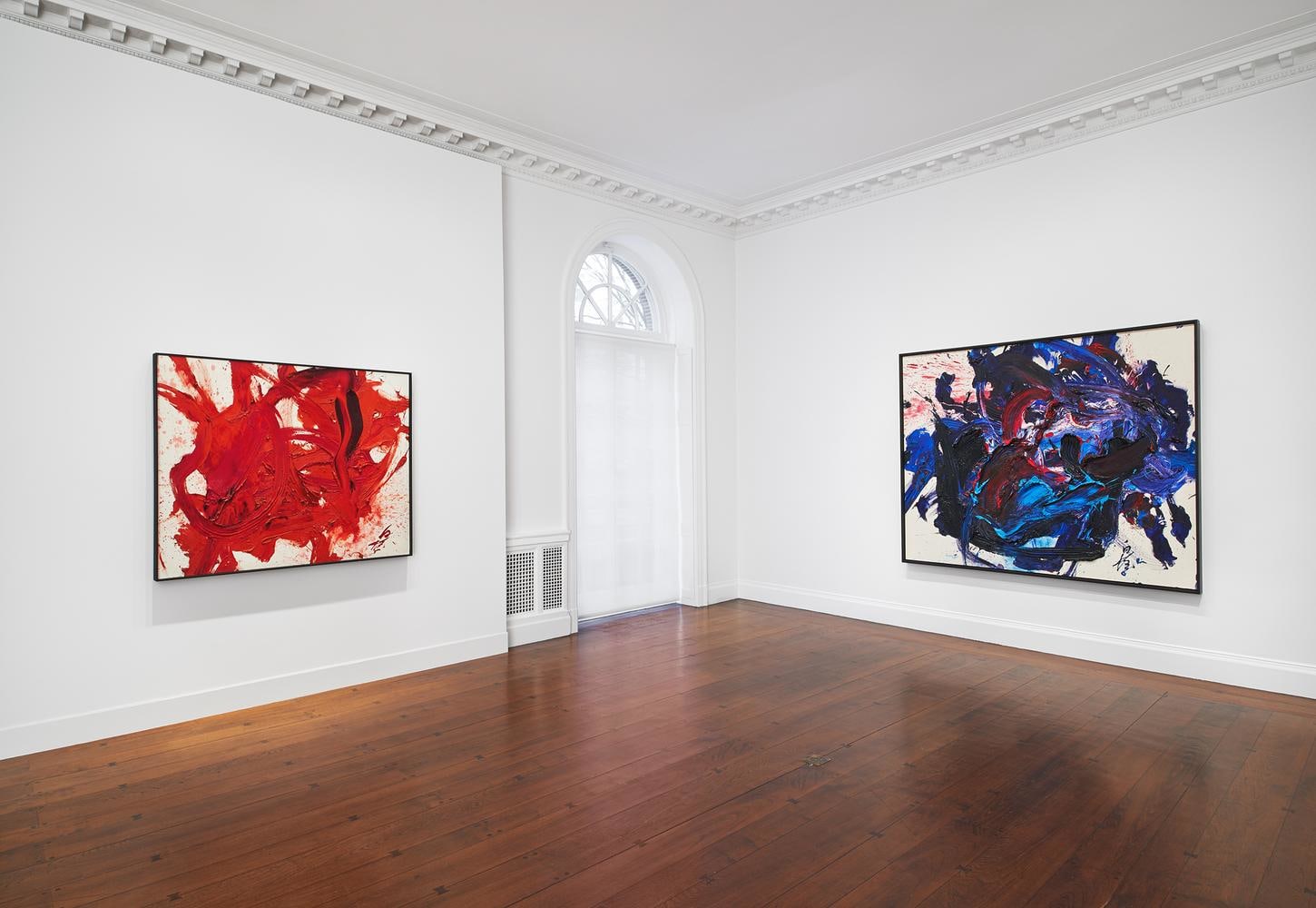
Photography by Tom Powel Imaging, Inc.
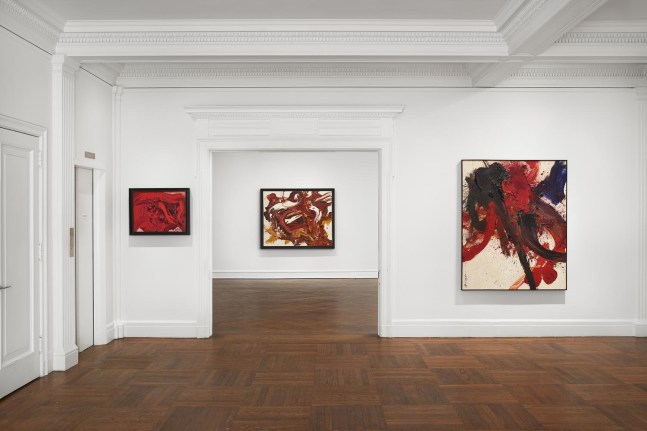
Photography by Tom Powel Imaging, Inc.

Photography by Tom Powel Imaging, Inc.

Photography by Tom Powel Imaging, Inc.
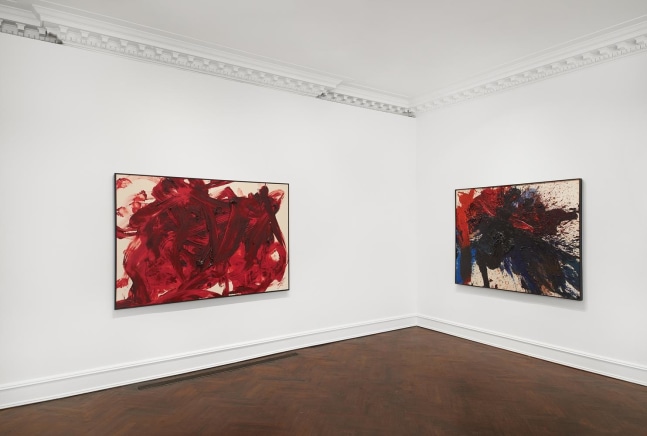
Photography by Tom Powel Imaging, Inc.

Photography by Tom Powel Imaging, Inc.

Photography by Tom Powel Imaging, Inc.

Photography by Tom Powel Imaging, Inc.

Photography by Tom Powel Imaging, Inc.

Photography by Tom Powel Imaging, Inc.

Photography by Tom Powel Imaging, Inc.
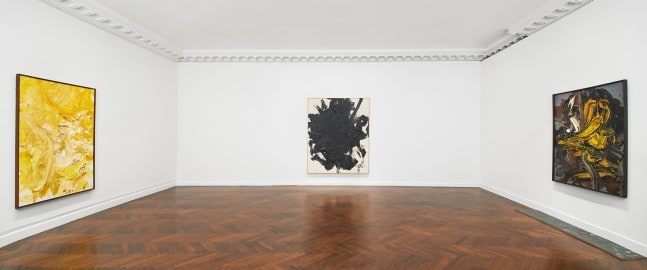
Photography by Tom Powel Imaging, Inc.

Photography by Tom Powel Imaging, Inc.

Photography by Tom Powel Imaging, Inc.

Photography by Tom Powel Imaging, Inc.

Photography by Tom Powel Imaging, Inc.

Photography by Tom Powel Imaging, Inc.

Photography by Tom Powel Imaging, Inc.

Photography by Tom Powel Imaging, Inc.
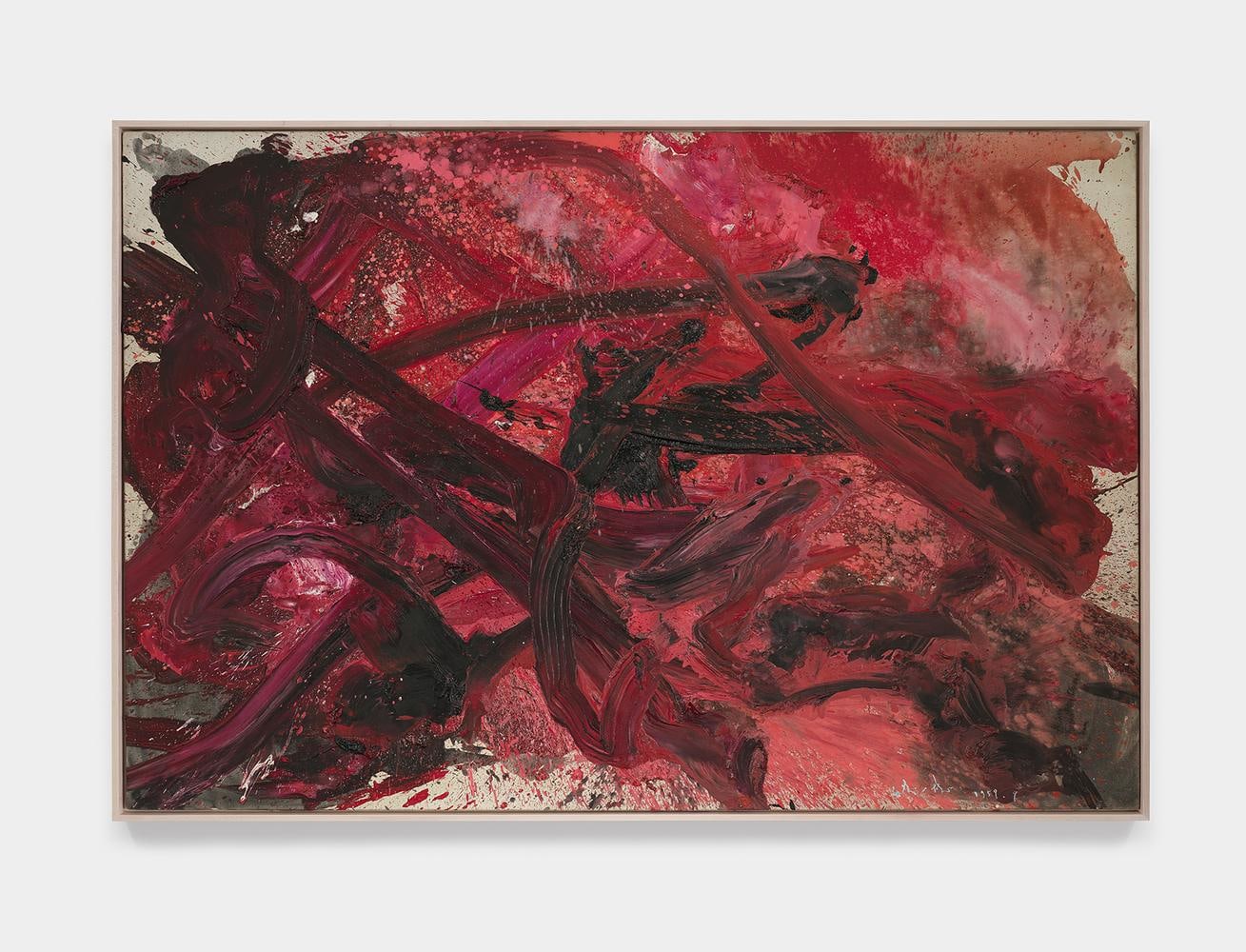
Untitled
1959
oil on canvas
71 3/4 x 107 inches (182.2 x 271.8 cm)
![Chibisei Waikyakuko [Dwarf Tiger incarnated from Earthly Subtle Star]
1959
oil on canvas
48 1/2 x 47 1/4 inches (123.2 x 120 cm)](https://img.artlogic.net/w_1800,h_1000,c_limit/exhibit-e/5ee91a5b30a72c31408b4567/ee75b24eab1ad2bd99fe7ab0fe562073.jpeg)
Chibisei Waikyakuko [Dwarf Tiger incarnated from Earthly Subtle Star]
1959
oil on canvas
48 1/2 x 47 1/4 inches (123.2 x 120 cm)
![Chikaisei Shinki Gunshi [Miraculous Strategist incarnated from Earthly Charging Star]
1961
oil on canvas
51 1/8 x 76 7/8 inches (129.9 x 195.3 cm)](https://img.artlogic.net/w_1800,h_1000,c_limit/exhibit-e/5ee91a5b30a72c31408b4567/1d1b431a359046a47d9281f4213b38d3.jpeg)
Chikaisei Shinki Gunshi [Miraculous Strategist incarnated from Earthly Charging Star]
1961
oil on canvas
51 1/8 x 76 7/8 inches (129.9 x 195.3 cm)
![Chihekisei Dakosho [Tiger-Fighting General incarnated from Earthly Remote Star]
1961
oil on canvas
63 3/4 x 51 1/4 inches (162 x 130 cm)](https://img.artlogic.net/w_1800,h_1000,c_limit/exhibit-e/5ee91a5b30a72c31408b4567/d3915255ec911a8b295c5691dd83115c.jpeg)
Chihekisei Dakosho [Tiger-Fighting General incarnated from Earthly Remote Star]
1961
oil on canvas
63 3/4 x 51 1/4 inches (162 x 130 cm)
![Chiisei Hakumenrokun [White Faced Squire incarnated from Earthly Peculiar Star]
1961
oil on canvas
63 3/4 x 51 1/4 inches (162 x 130 cm)](https://img.artlogic.net/w_1800,h_1000,c_limit/exhibit-e/5ee91a5b30a72c31408b4567/869f6b8e3c4d8d160740e5d1d2aca5aa.jpeg)
Chiisei Hakumenrokun [White Faced Squire incarnated from Earthly Peculiar Star]
1961
oil on canvas
63 3/4 x 51 1/4 inches (162 x 130 cm)
![Chikusei Shohao [Little King incarnated from Earthly Empty Star]
1961
oil on canvas
51 1/4  x 63 3/4 inches (130 x 162 cm)](https://img.artlogic.net/w_1800,h_1000,c_limit/exhibit-e/5ee91a5b30a72c31408b4567/8e748f783e3089eabcae29949ce3091b.jpeg)
Chikusei Shohao [Little King incarnated from Earthly Empty Star]
1961
oil on canvas
51 1/4 x 63 3/4 inches (130 x 162 cm)
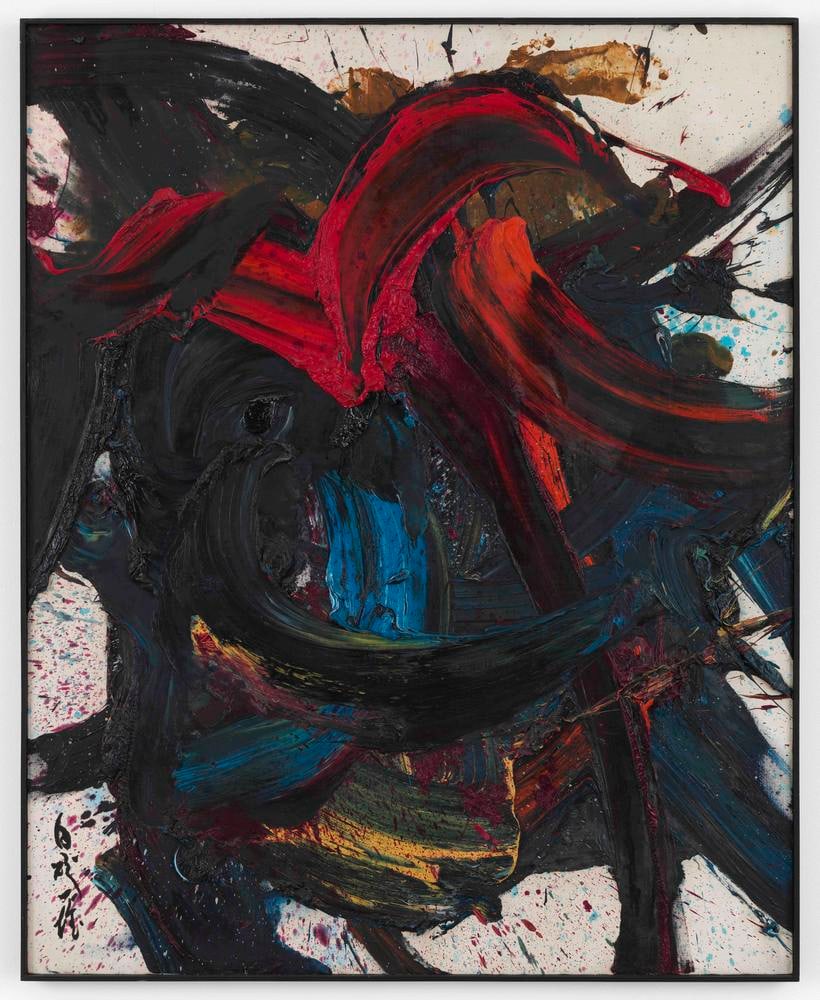
T23 (Asahina Saburo-Wada Yoshihide)
1962
oil on canvas
64 1/8 x 51 7/8 inches (163 x 132 cm)
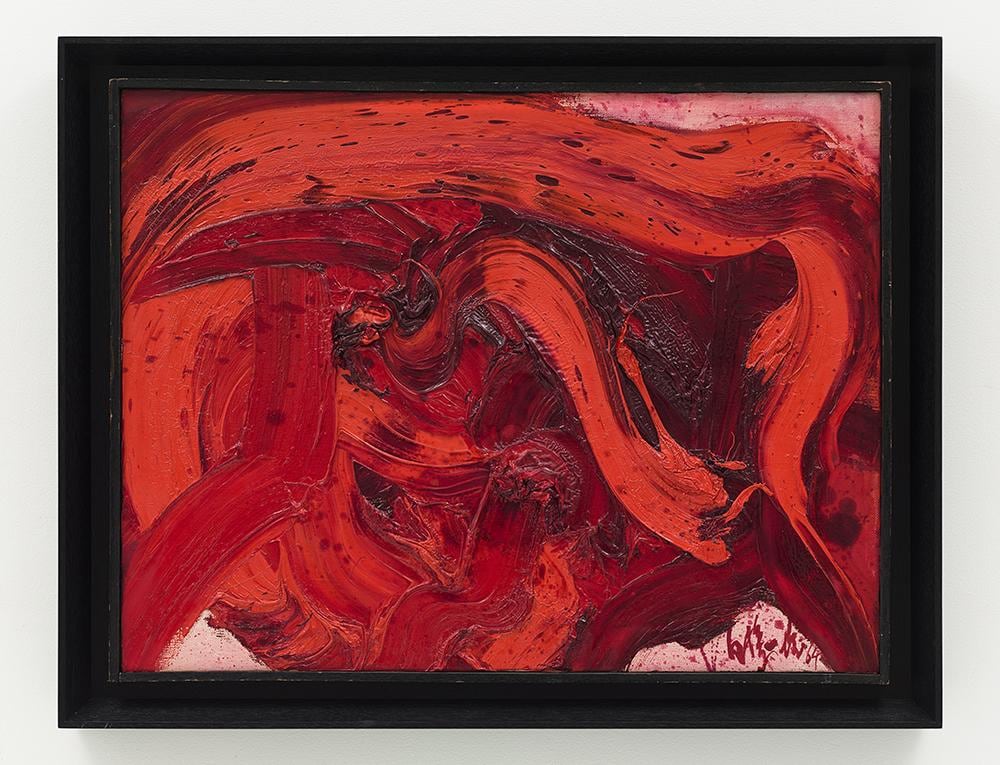
Untitled
1964
oil on canvas
19 1/2 x 25 1/2 inches (49.5 x 64.8 cm)
![Daikokuten [God of Wealth]
1972
alkyd paint on canvas
51 5/8 x 64 1/8 inches (131.1 x 162.9 cm)](https://img.artlogic.net/w_1800,h_1000,c_limit/exhibit-e/5ee91a5b30a72c31408b4567/b83e7c4dc3e548f90a11b7986f6ca716.jpeg)
Daikokuten [God of Wealth]
1972
alkyd paint on canvas
51 5/8 x 64 1/8 inches (131.1 x 162.9 cm)
![Gusoku Jintsuriki [Armed with Divine Power]
1982
oil on canvas
63 3/4 x 51 1/4 inches (161.9 x 130.2 cm)](https://img.artlogic.net/w_1800,h_1000,c_limit/exhibit-e/5ee91a5b30a72c31408b4567/e0a1cec564364d81e7f31620122ced28.jpeg)
Gusoku Jintsuriki [Armed with Divine Power]
1982
oil on canvas
63 3/4 x 51 1/4 inches (161.9 x 130.2 cm)
![Enji [Dark Red]
1983
oil on canvas
52 x 77 inches (132.1 x 195.6 cm)](https://img.artlogic.net/w_1800,h_1000,c_limit/exhibit-e/5ee91a5b30a72c31408b4567/44e845c0d9f1c62b0c2fc6de47e04dac.jpeg)
Enji [Dark Red]
1983
oil on canvas
52 x 77 inches (132.1 x 195.6 cm)
![Kakueki [Luminous Shine]
1985
oil on canvas
51 1/8 x 63 7/8 inches (130 x 162 cm)](https://img.artlogic.net/w_1800,h_1000,c_limit/exhibit-e/5ee91a5b30a72c31408b4567/defdc0dd12c898d65655989c5fe65edb.jpeg)
Kakueki [Luminous Shine]
1985
oil on canvas
51 1/8 x 63 7/8 inches (130 x 162 cm)
![Zuisohen [Auspicious Sign]
1986
oil on canvas
51 3/10 x 63 4/5 inches (130.30  x 162.10 cm)](https://img.artlogic.net/w_1800,h_1000,c_limit/exhibit-e/5ee91a5b30a72c31408b4567/cc3e117cf4a6963cd2d92c10a7c4691b.jpeg)
Zuisohen [Auspicious Sign]
1986
oil on canvas
51 3/10 x 63 4/5 inches (130.30 x 162.10 cm)
![Hoshokai [Lop Nur]
1988
oil on canvas
71 1/8 x 89 3/8 inches (181 x 227 cm)](https://img.artlogic.net/w_1800,h_1000,c_limit/exhibit-e/5ee91a5b30a72c31408b4567/bea91cdd363c6dabdef8999d2130a996.jpeg)
Hoshokai [Lop Nur]
1988
oil on canvas
71 1/8 x 89 3/8 inches (181 x 227 cm)
![Tokko [Self-Reliance]
1989
oil on canvas
89 3/8  x 71 1/4 inches (227 x 181 cm)](https://img.artlogic.net/w_1800,h_1000,c_limit/exhibit-e/5ee91a5b30a72c31408b4567/c586ff1fd860b601d2c9c5eaef92a53c.jpeg)
Tokko [Self-Reliance]
1989
oil on canvas
89 3/8 x 71 1/4 inches (227 x 181 cm)
![Choryo [Jumping Dragon]
1994
oil on canvas
76 x 102 inches (193 x 259.1 cm)](https://img.artlogic.net/w_1800,h_1000,c_limit/exhibit-e/5ee91a5b30a72c31408b4567/da462be4b3ab0355bf497aade728d12f.jpeg)
Choryo [Jumping Dragon]
1994
oil on canvas
76 x 102 inches (193 x 259.1 cm)
![Chimosei Hakujitsuso [Daylight Rat incarnated from Earthly Wasted Star]
2001
oil on canvas
76 x 51 1/8 inches (193 x 129.9 cm)](https://img.artlogic.net/w_1800,h_1000,c_limit/exhibit-e/5ee91a5b30a72c31408b4567/75a387ff4664417916e765477988ffe7.jpeg)
Chimosei Hakujitsuso [Daylight Rat incarnated from Earthly Wasted Star]
2001
oil on canvas
76 x 51 1/8 inches (193 x 129.9 cm)

Untitled
1959
oil on canvas
71 3/4 x 107 inches (182.2 x 271.8 cm)
![Chibisei Waikyakuko [Dwarf Tiger incarnated from Earthly Subtle Star]
1959
oil on canvas
48 1/2 x 47 1/4 inches (123.2 x 120 cm)](https://img.artlogic.net/w_647,h_647,c_limit/exhibit-e/5ee91a5b30a72c31408b4567/ee75b24eab1ad2bd99fe7ab0fe562073.jpeg)
Chibisei Waikyakuko [Dwarf Tiger incarnated from Earthly Subtle Star]
1959
oil on canvas
48 1/2 x 47 1/4 inches (123.2 x 120 cm)
![Chikaisei Shinki Gunshi [Miraculous Strategist incarnated from Earthly Charging Star]
1961
oil on canvas
51 1/8 x 76 7/8 inches (129.9 x 195.3 cm)](https://img.artlogic.net/w_647,h_647,c_limit/exhibit-e/5ee91a5b30a72c31408b4567/1d1b431a359046a47d9281f4213b38d3.jpeg)
Chikaisei Shinki Gunshi [Miraculous Strategist incarnated from Earthly Charging Star]
1961
oil on canvas
51 1/8 x 76 7/8 inches (129.9 x 195.3 cm)
![Chihekisei Dakosho [Tiger-Fighting General incarnated from Earthly Remote Star]
1961
oil on canvas
63 3/4 x 51 1/4 inches (162 x 130 cm)](https://img.artlogic.net/w_647,h_647,c_limit/exhibit-e/5ee91a5b30a72c31408b4567/d3915255ec911a8b295c5691dd83115c.jpeg)
Chihekisei Dakosho [Tiger-Fighting General incarnated from Earthly Remote Star]
1961
oil on canvas
63 3/4 x 51 1/4 inches (162 x 130 cm)
![Chiisei Hakumenrokun [White Faced Squire incarnated from Earthly Peculiar Star]
1961
oil on canvas
63 3/4 x 51 1/4 inches (162 x 130 cm)](https://img.artlogic.net/w_647,h_647,c_limit/exhibit-e/5ee91a5b30a72c31408b4567/869f6b8e3c4d8d160740e5d1d2aca5aa.jpeg)
Chiisei Hakumenrokun [White Faced Squire incarnated from Earthly Peculiar Star]
1961
oil on canvas
63 3/4 x 51 1/4 inches (162 x 130 cm)
![Chikusei Shohao [Little King incarnated from Earthly Empty Star]
1961
oil on canvas
51 1/4  x 63 3/4 inches (130 x 162 cm)](https://img.artlogic.net/w_647,h_647,c_limit/exhibit-e/5ee91a5b30a72c31408b4567/8e748f783e3089eabcae29949ce3091b.jpeg)
Chikusei Shohao [Little King incarnated from Earthly Empty Star]
1961
oil on canvas
51 1/4 x 63 3/4 inches (130 x 162 cm)

T23 (Asahina Saburo-Wada Yoshihide)
1962
oil on canvas
64 1/8 x 51 7/8 inches (163 x 132 cm)

Untitled
1964
oil on canvas
19 1/2 x 25 1/2 inches (49.5 x 64.8 cm)
![Daikokuten [God of Wealth]
1972
alkyd paint on canvas
51 5/8 x 64 1/8 inches (131.1 x 162.9 cm)](https://img.artlogic.net/w_647,h_647,c_limit/exhibit-e/5ee91a5b30a72c31408b4567/b83e7c4dc3e548f90a11b7986f6ca716.jpeg)
Daikokuten [God of Wealth]
1972
alkyd paint on canvas
51 5/8 x 64 1/8 inches (131.1 x 162.9 cm)
![Gusoku Jintsuriki [Armed with Divine Power]
1982
oil on canvas
63 3/4 x 51 1/4 inches (161.9 x 130.2 cm)](https://img.artlogic.net/w_647,h_647,c_limit/exhibit-e/5ee91a5b30a72c31408b4567/e0a1cec564364d81e7f31620122ced28.jpeg)
Gusoku Jintsuriki [Armed with Divine Power]
1982
oil on canvas
63 3/4 x 51 1/4 inches (161.9 x 130.2 cm)
![Enji [Dark Red]
1983
oil on canvas
52 x 77 inches (132.1 x 195.6 cm)](https://img.artlogic.net/w_647,h_647,c_limit/exhibit-e/5ee91a5b30a72c31408b4567/44e845c0d9f1c62b0c2fc6de47e04dac.jpeg)
Enji [Dark Red]
1983
oil on canvas
52 x 77 inches (132.1 x 195.6 cm)
![Kakueki [Luminous Shine]
1985
oil on canvas
51 1/8 x 63 7/8 inches (130 x 162 cm)](https://img.artlogic.net/w_647,h_647,c_limit/exhibit-e/5ee91a5b30a72c31408b4567/defdc0dd12c898d65655989c5fe65edb.jpeg)
Kakueki [Luminous Shine]
1985
oil on canvas
51 1/8 x 63 7/8 inches (130 x 162 cm)
![Zuisohen [Auspicious Sign]
1986
oil on canvas
51 3/10 x 63 4/5 inches (130.30  x 162.10 cm)](https://img.artlogic.net/w_647,h_647,c_limit/exhibit-e/5ee91a5b30a72c31408b4567/cc3e117cf4a6963cd2d92c10a7c4691b.jpeg)
Zuisohen [Auspicious Sign]
1986
oil on canvas
51 3/10 x 63 4/5 inches (130.30 x 162.10 cm)
![Hoshokai [Lop Nur]
1988
oil on canvas
71 1/8 x 89 3/8 inches (181 x 227 cm)](https://img.artlogic.net/w_647,h_647,c_limit/exhibit-e/5ee91a5b30a72c31408b4567/bea91cdd363c6dabdef8999d2130a996.jpeg)
Hoshokai [Lop Nur]
1988
oil on canvas
71 1/8 x 89 3/8 inches (181 x 227 cm)
![Tokko [Self-Reliance]
1989
oil on canvas
89 3/8  x 71 1/4 inches (227 x 181 cm)](https://img.artlogic.net/w_647,h_647,c_limit/exhibit-e/5ee91a5b30a72c31408b4567/c586ff1fd860b601d2c9c5eaef92a53c.jpeg)
Tokko [Self-Reliance]
1989
oil on canvas
89 3/8 x 71 1/4 inches (227 x 181 cm)
![Choryo [Jumping Dragon]
1994
oil on canvas
76 x 102 inches (193 x 259.1 cm)](https://img.artlogic.net/w_647,h_647,c_limit/exhibit-e/5ee91a5b30a72c31408b4567/da462be4b3ab0355bf497aade728d12f.jpeg)
Choryo [Jumping Dragon]
1994
oil on canvas
76 x 102 inches (193 x 259.1 cm)
![Chimosei Hakujitsuso [Daylight Rat incarnated from Earthly Wasted Star]
2001
oil on canvas
76 x 51 1/8 inches (193 x 129.9 cm)](https://img.artlogic.net/w_647,h_647,c_limit/exhibit-e/5ee91a5b30a72c31408b4567/75a387ff4664417916e765477988ffe7.jpeg)
Chimosei Hakujitsuso [Daylight Rat incarnated from Earthly Wasted Star]
2001
oil on canvas
76 x 51 1/8 inches (193 x 129.9 cm)

Photographer: Benjamin Lozovsky/BFAnyc.com

Photographer: Benjamin Lozovsky/BFAnyc.com
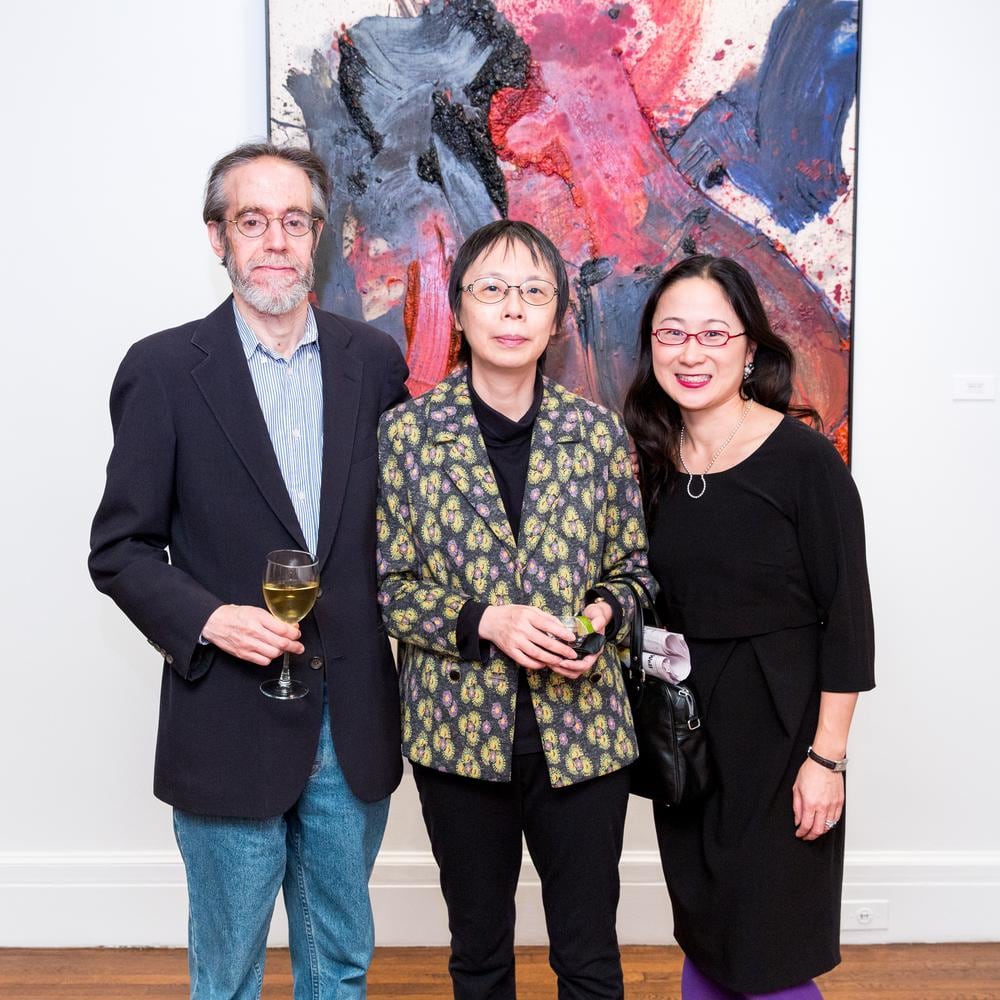
Photographer: Benjamin Lozovsky/BFAnyc.com
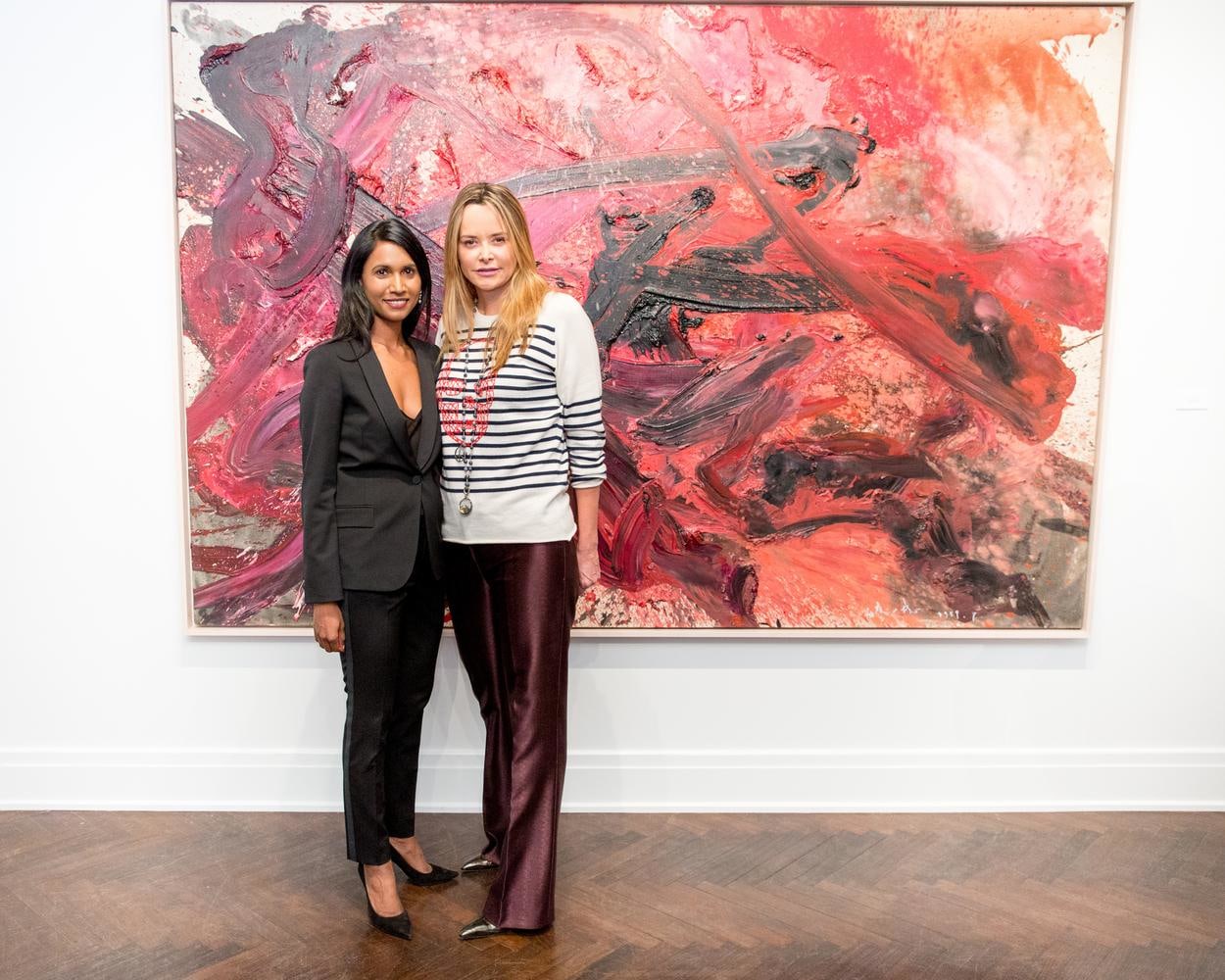
Photographer: Benjamin Lozovsky/BFAnyc.com
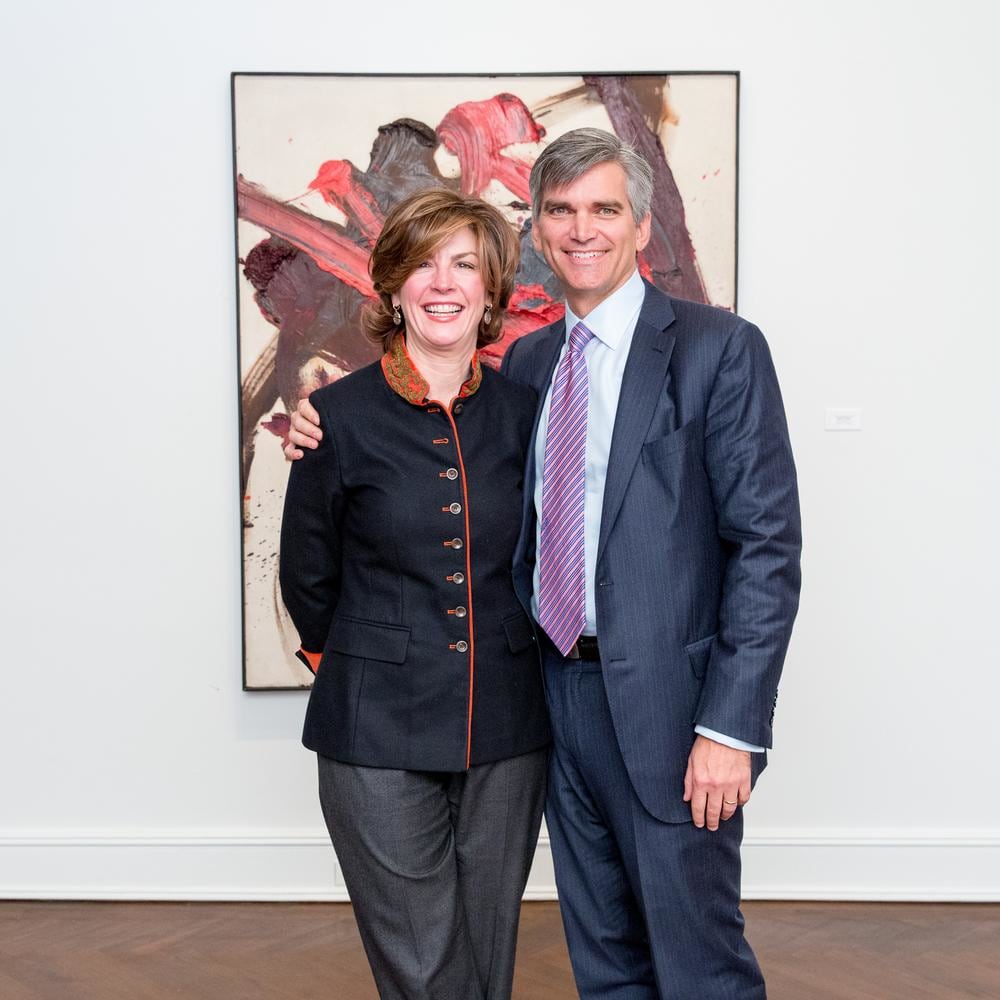
Photographer: Benjamin Lozovsky/BFAnyc.com
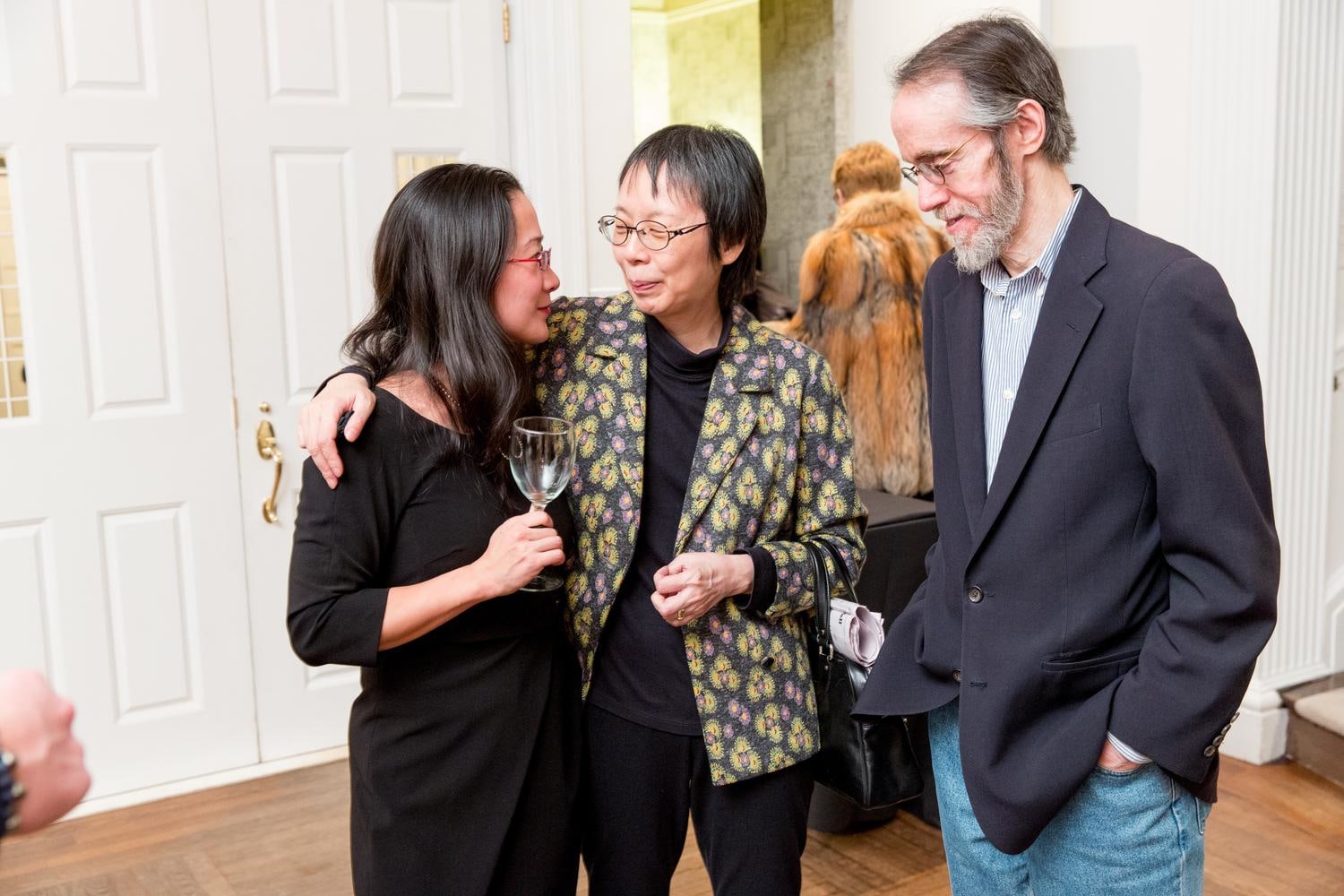
Photographer: Benjamin Lozovsky/BFAnyc.com

Photographer: Benjamin Lozovsky/BFAnyc.com
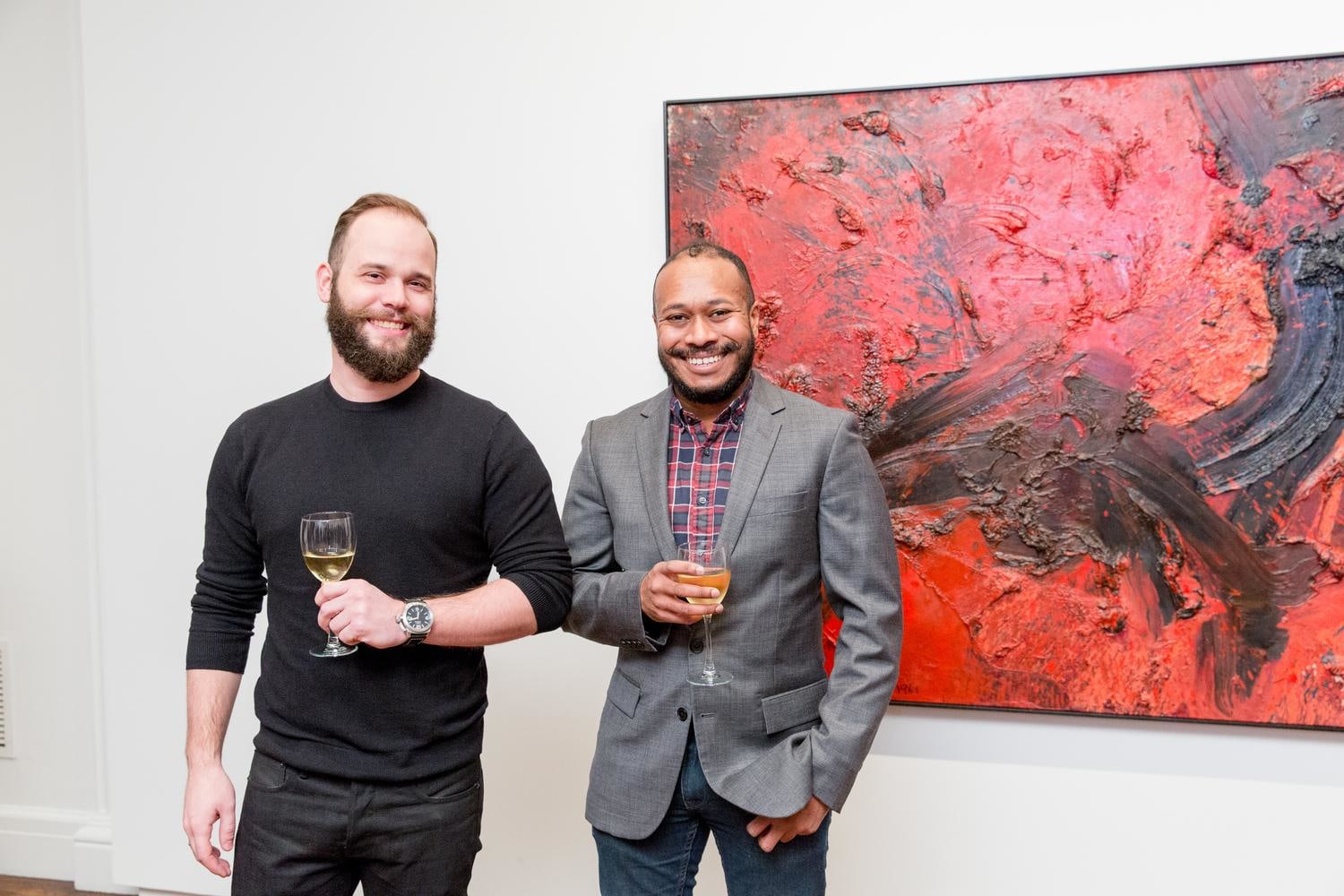
Photographer: Benjamin Lozovsky/BFAnyc.com

Photographer: Benjamin Lozovsky/BFAnyc.com

Photographer: Benjamin Lozovsky/BFAnyc.com
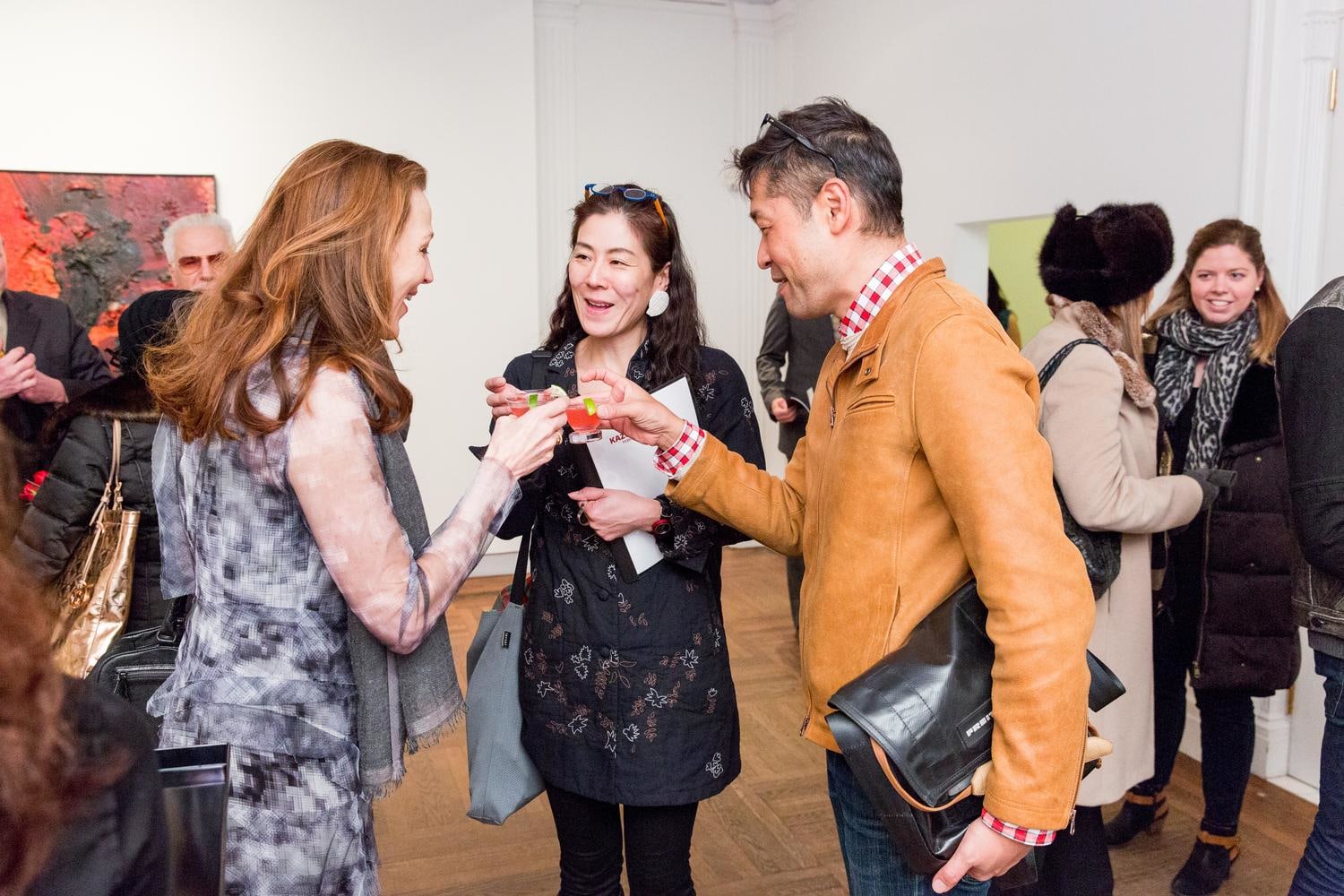
Photographer: Benjamin Lozovsky/BFAnyc.com
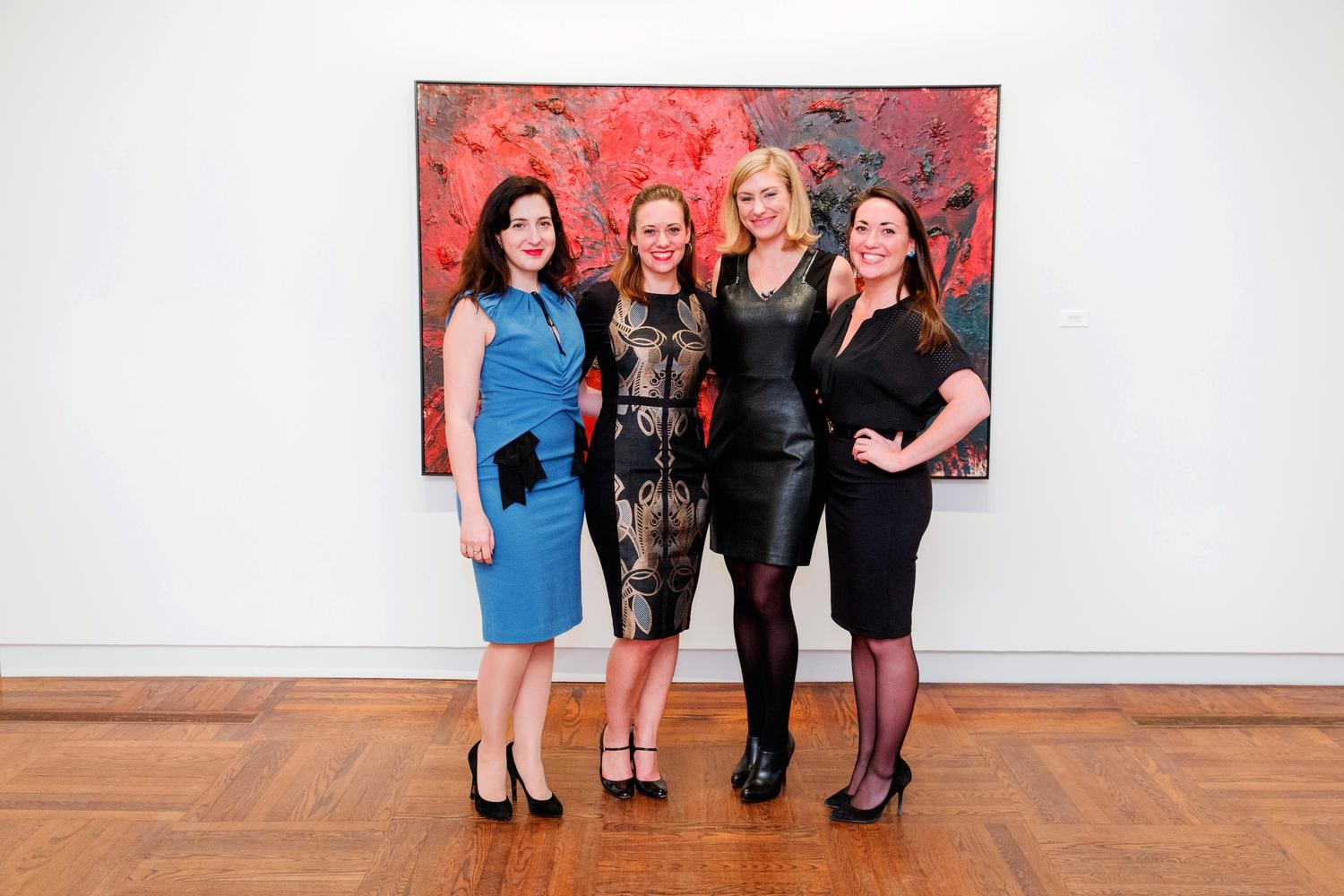
Photographer: Benjamin Lozovsky/BFAnyc.com
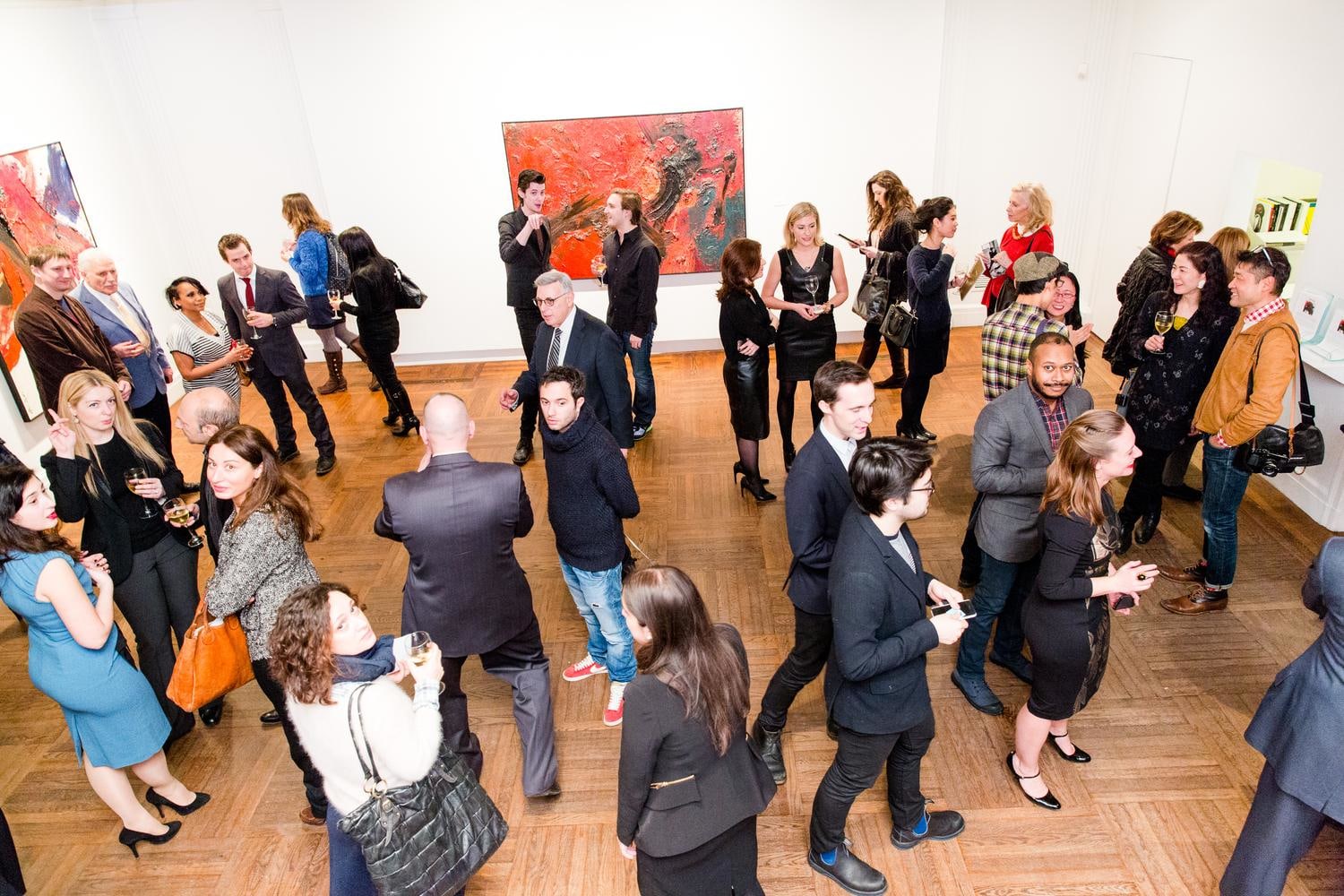
Photographer: Benjamin Lozovsky/BFAnyc.com

Photographer: Benjamin Lozovsky/BFAnyc.com

Photographer: Benjamin Lozovsky/BFAnyc.com

Photographer: Benjamin Lozovsky/BFAnyc.com

Photographer: Benjamin Lozovsky/BFAnyc.com

Photographer: Benjamin Lozovsky/BFAnyc.com

Photographer: Benjamin Lozovsky/BFAnyc.com
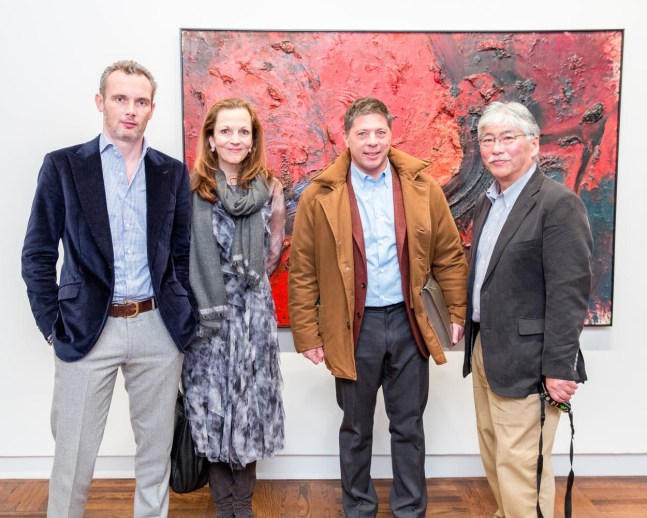
Photographer: Benjamin Lozovsky/BFAnyc.com

Photographer: Benjamin Lozovsky/BFAnyc.com

Photographer: Benjamin Lozovsky/BFAnyc.com
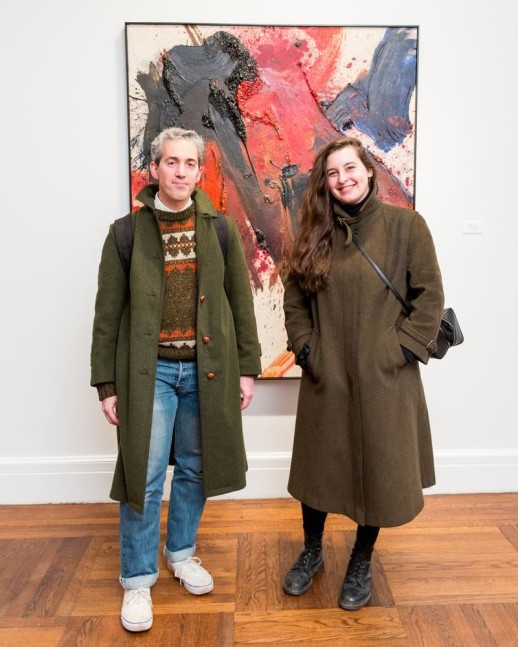
Photographer: Benjamin Lozovsky/BFAnyc.com

Photographer: Benjamin Lozovsky/BFAnyc.com

Photographer: Benjamin Lozovsky/BFAnyc.com

Photographer: Benjamin Lozovsky/BFAnyc.com
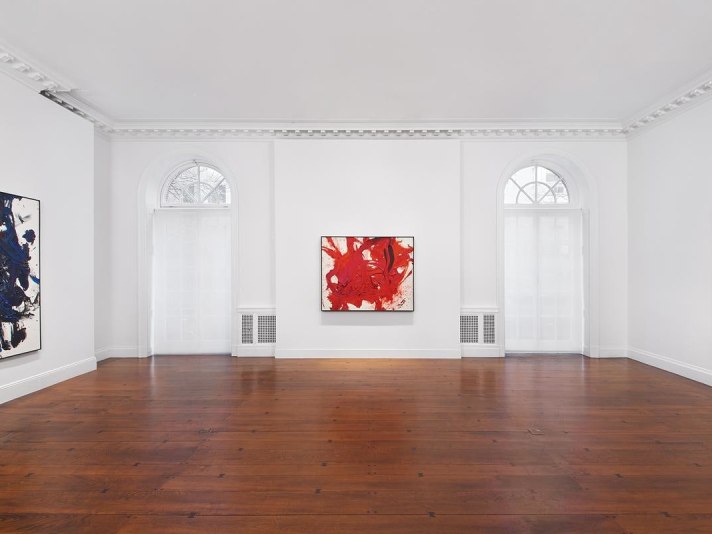
IN AVANT-GARDE art, as in polar exploration, it’s getting there first that counts. The history of modernism is often viewed as a series of discoveries with the glory going to whomever made the next conceptual breakthrough. As that story is usually told, for the first half of the 20th century the innovative centre was Europe, before the old world was overtaken in the aftermath of the second world war by America.

THE GUTAI GROUP may be the cicadas of postwar art—forever cycling through visibility and obscurity, suddenly bursting into view every ten years or so. Buoyed by the attentions of critic and curator Michel Tapié, the group formed in Ashiya, Japan, in 1954, and made their New York debut at the Martha Jackson Gallery just four years later, only to be summarily dismissed as latecomers to the Abstract Expressionist party. Nearly a decade later, they resurfaced in New York again, in “New Japanese Painting and Sculpture” at the Museum of Modern Art, but that too proved a short-lived spotlight, one whose wattage owed more to Cold War–inflected interest in pre-Olympics Japan than to the works actually shown. In the mid-1980s and in the second half of the ’90s, a spate of group exhibitions in Europe and Japan proved promising, among them the Gutai retrospective at the Galerie Nationale du Jeu de Paume in Paris in 1999.
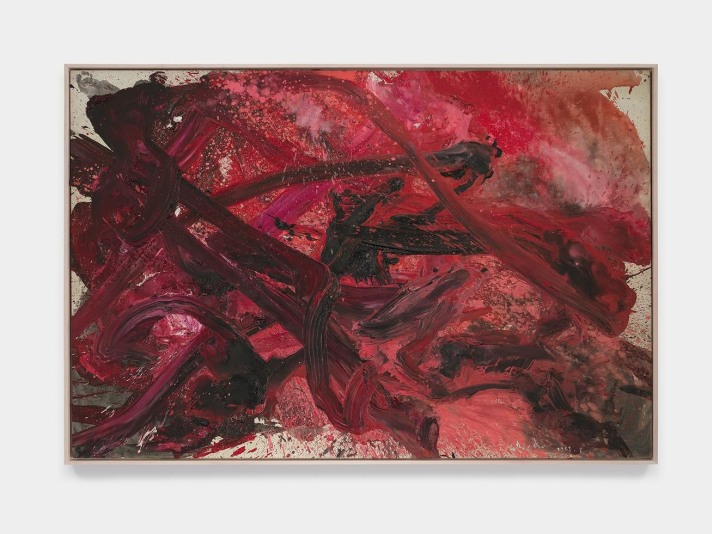
The avant-garde movement called Gutai has received a belated recognition and a new appreciation of perhaps its most brilliant member, Shiraga. While an ethnocentric, aesthetic chauvinism in the American artworld has downplayed the significance of this movement, a newly revisionist spirit is driving a wedge into the monolithic canon, upsetting an entrenched view of the West’s monopoly on reinventing art.
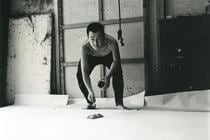
Shiraga, who died in 2008, has had a dedicated following in Europe for the past 50 years. Born into a prosperous family in 1924, he was associated with Gutai in 1955, a year after the group was founded. In 1954, as part of his performance-based artistic output, he began creating works by suspending himself over the canvases with a rope and painting with his feet.

Many great painters exploit the undiscovered possibilities of their chosen medium – think of van Gogh treating brushstrokes like woodcarving, or J.M.W. Turner creating the illusion of space from thin washes of color. Add Kazuo Shiraga, one of the leaders of Japan’s postwar generation of artists, to this list: He was the first to come to grips with the inherent slipperiness of paint.
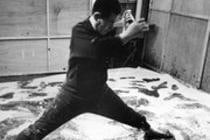
A member of Japan’s Gutai group of avant-garde artists, Shiraga (1924-2008) developed during his six-decade career the singular technique of painting suspended from a rope, using his feet to make violently abstract, thickly impasted canvases. It has only been since the artist’s death, however, that the conceptual originality and visual power of these “foot paintings” have been recognized by Western curators and collectors, particularly in the United States.
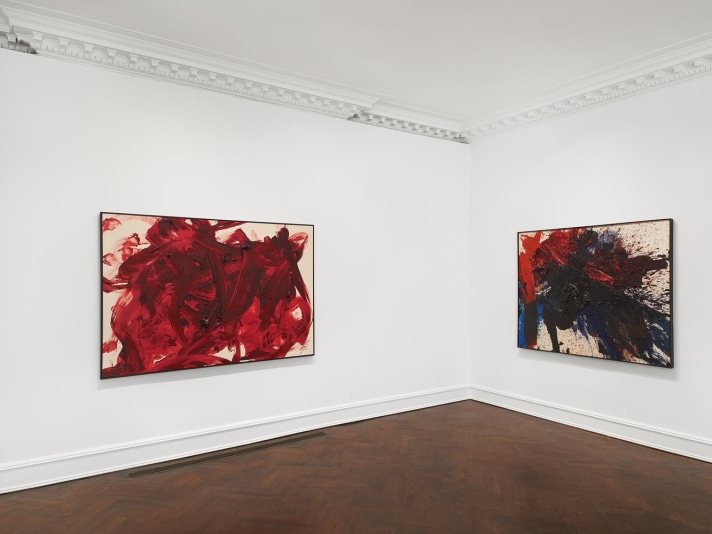
Kazuo Shiraga (1924–2008) has steadily gained historical momentum as Gutai's biggest name. He's celebrated right now in a big exhibition at the Dallas Art Museum alongside fellow Gutai great Sadamasa Motonaga, and has dueling shows of his feverishly handsome canvases at Mnuchin and Dominique Lévy galleries in New York; in the latter case, juxtaposed with some nice ceramic sculptures by Satoru Hoshino. Upcoming, too, on April 30, at Fergus McCaffrey Gallery in New York, is a joint show of the work Kazuo and Fujiko Shiraga. There is a lot of interest in the artist, clearly.
